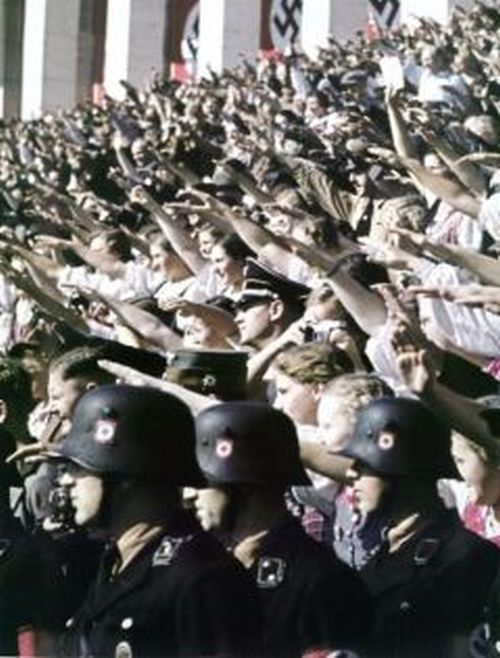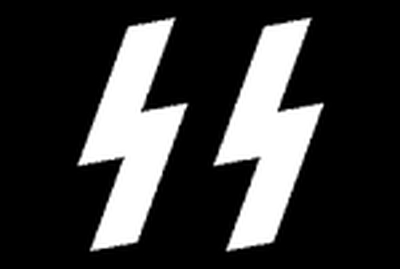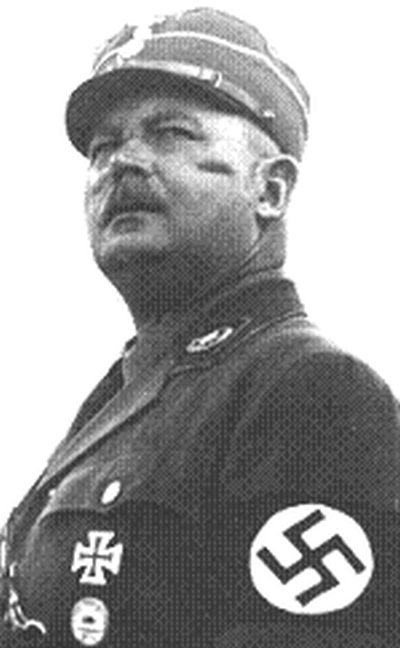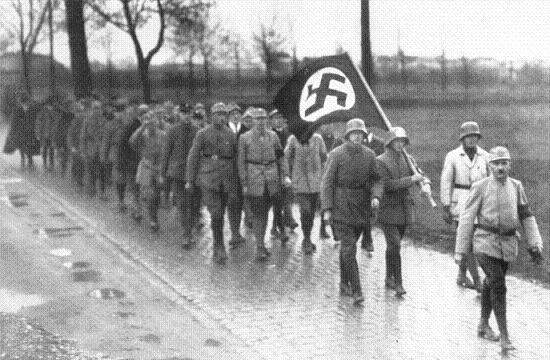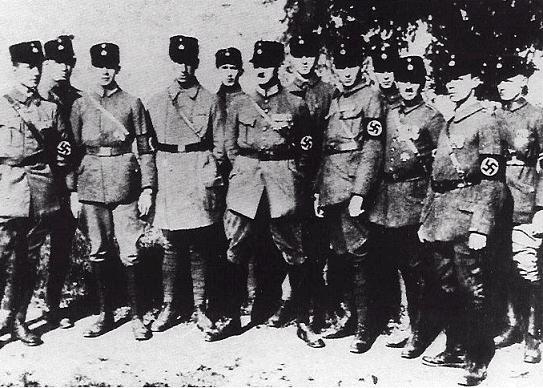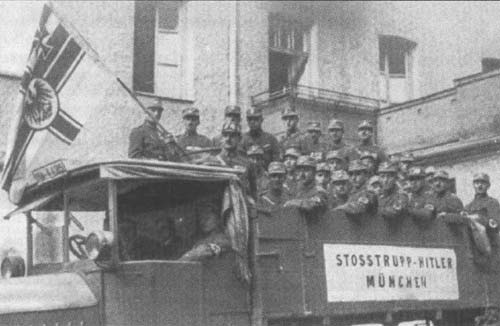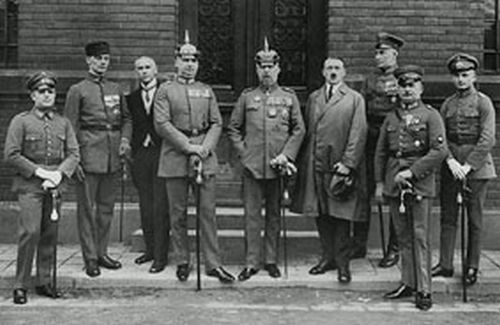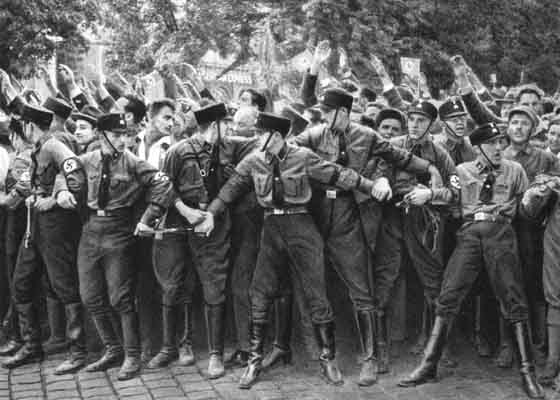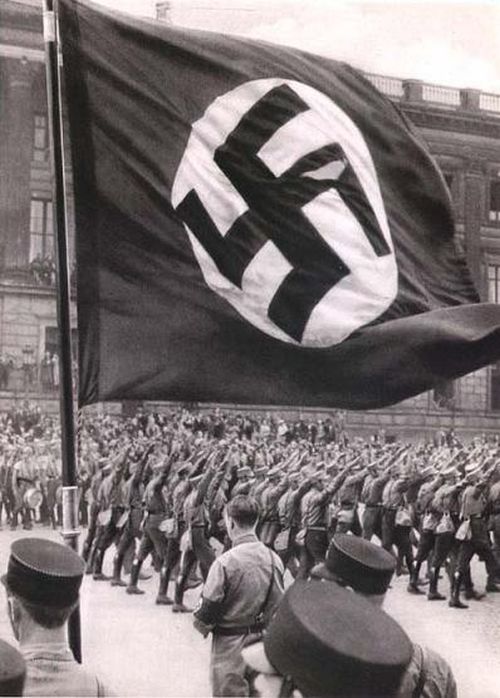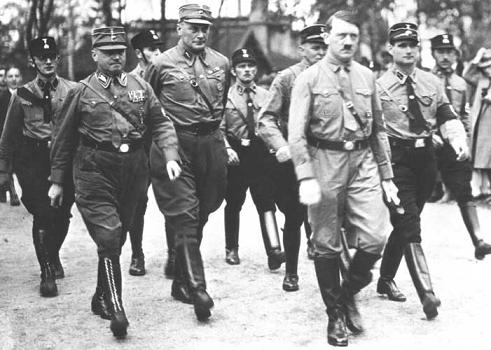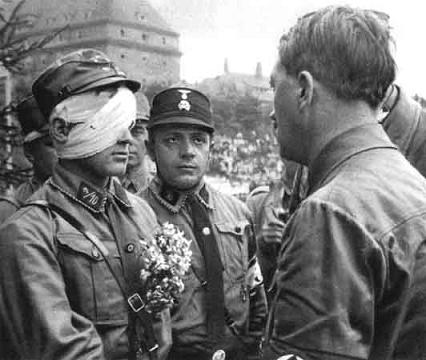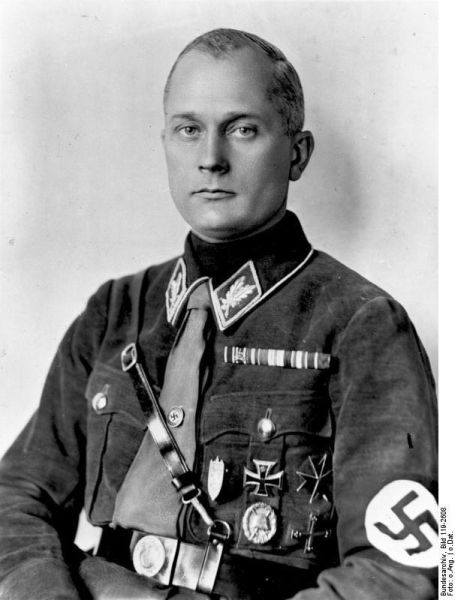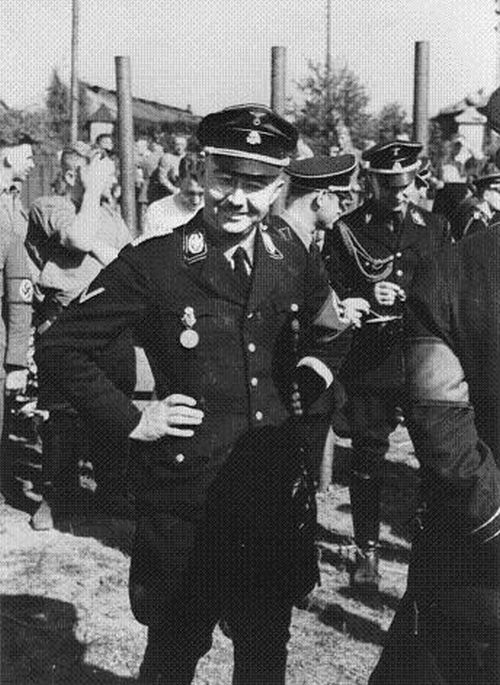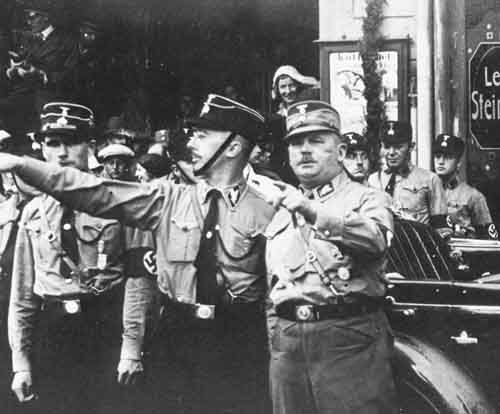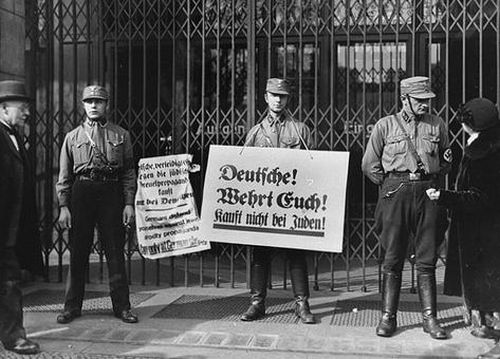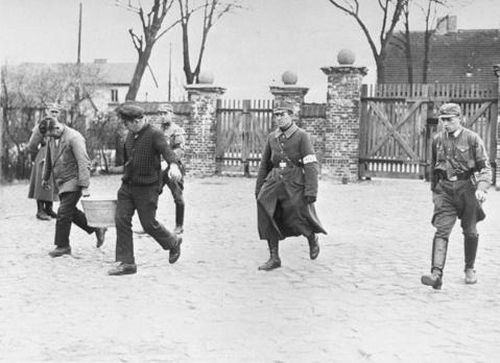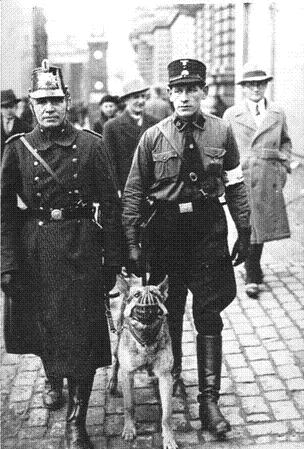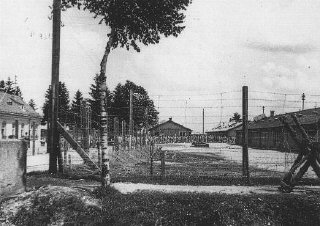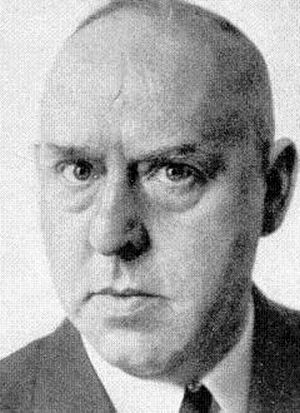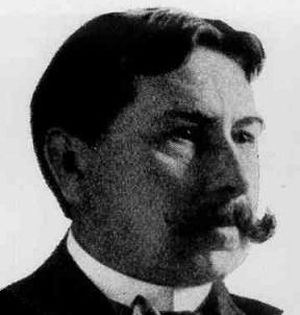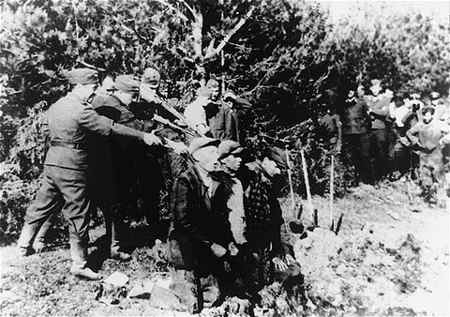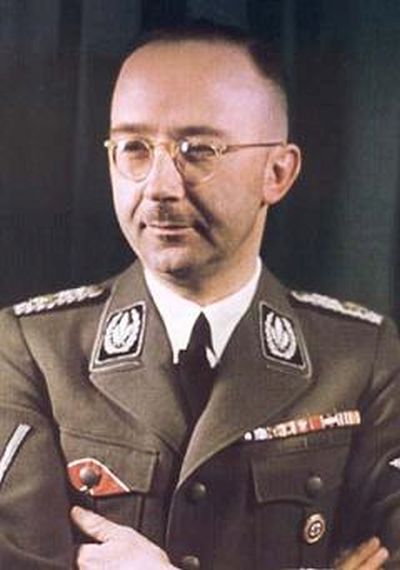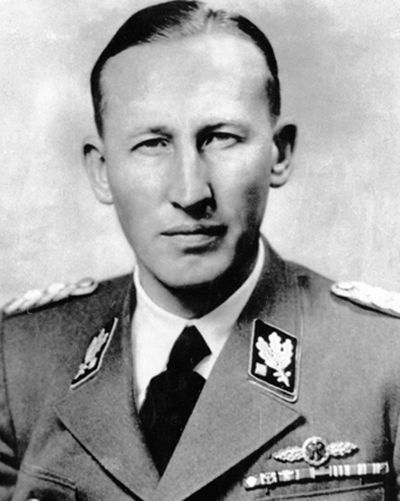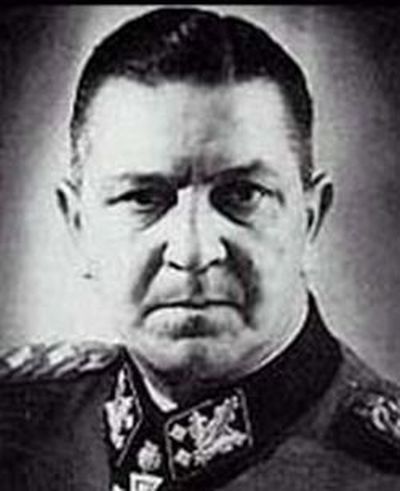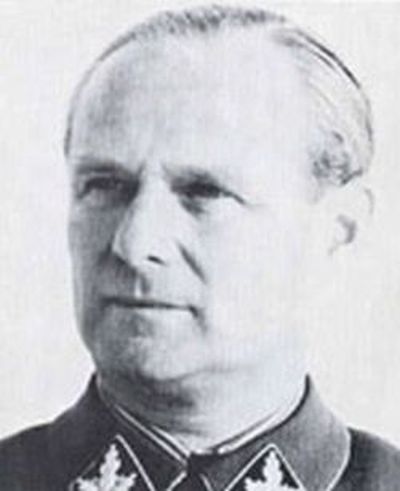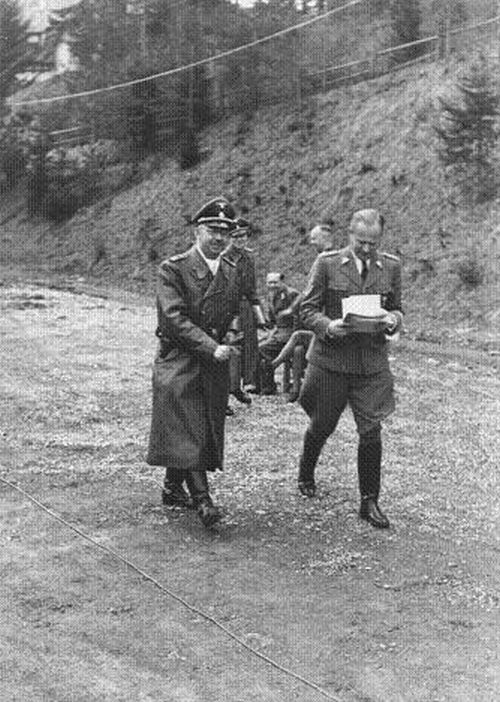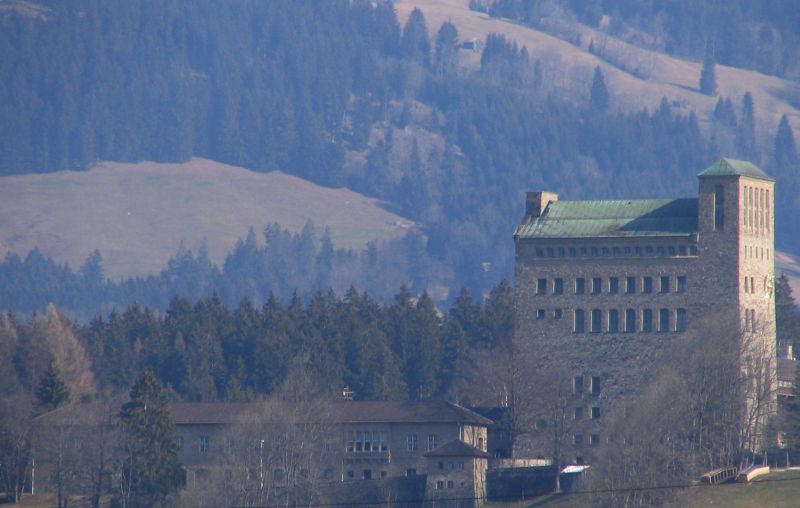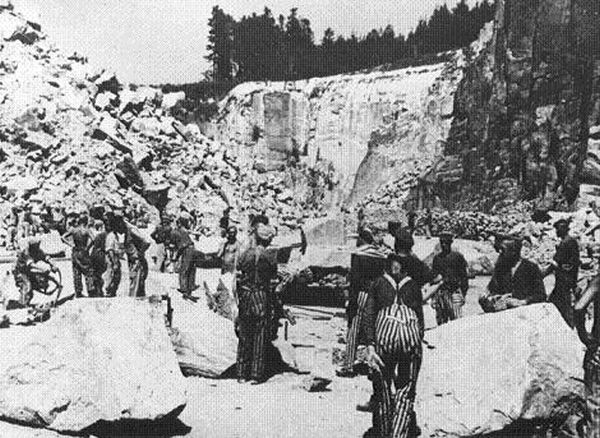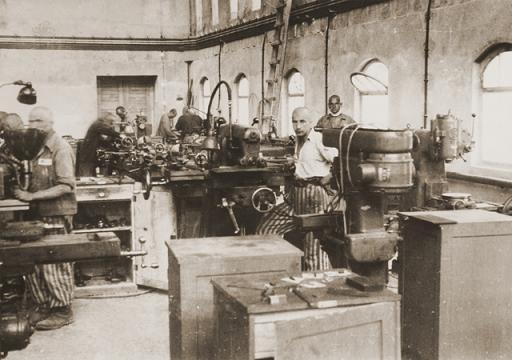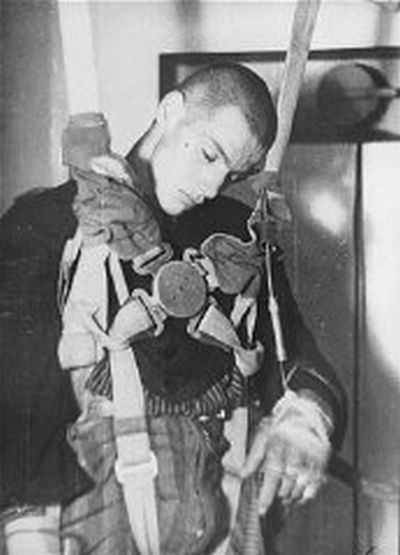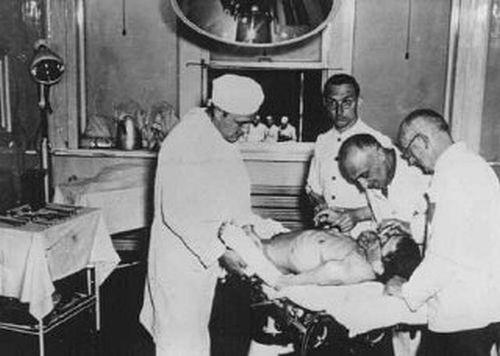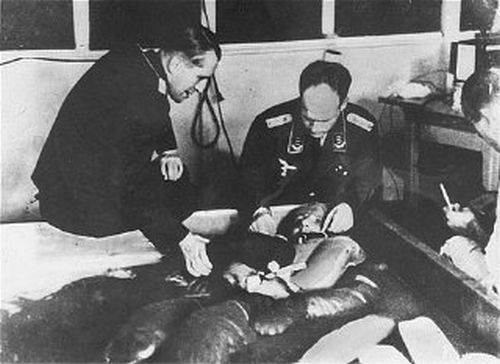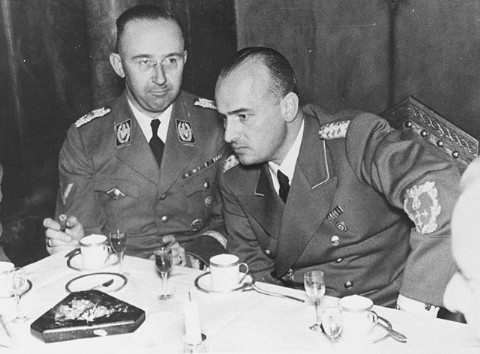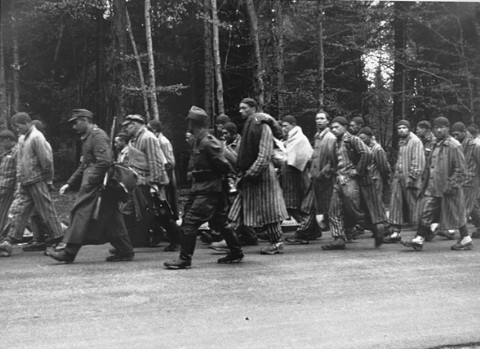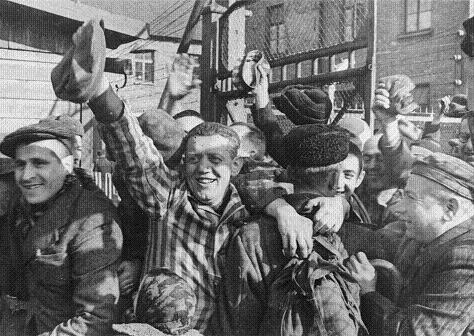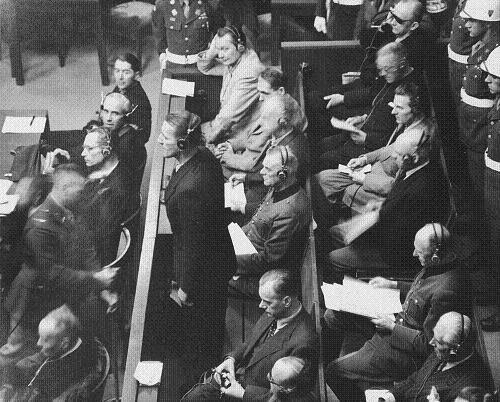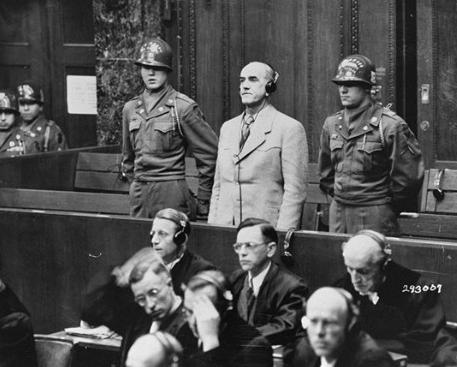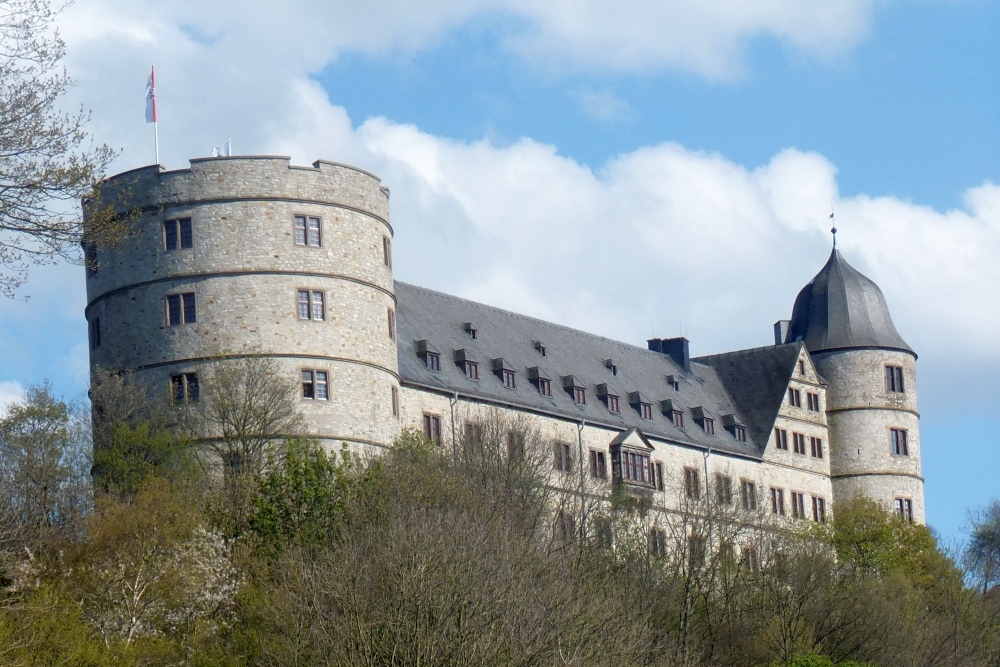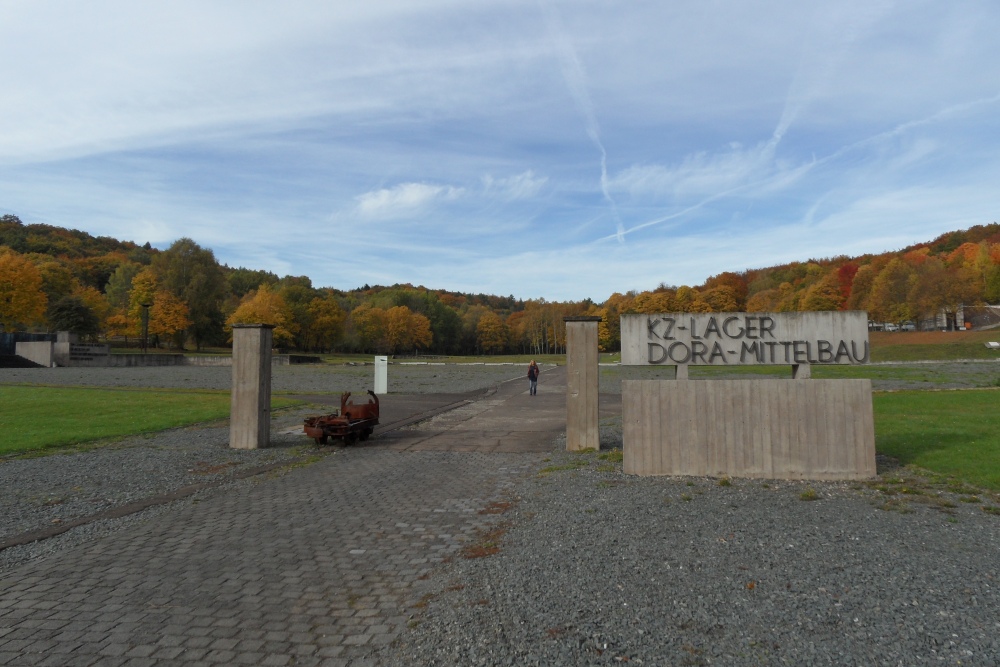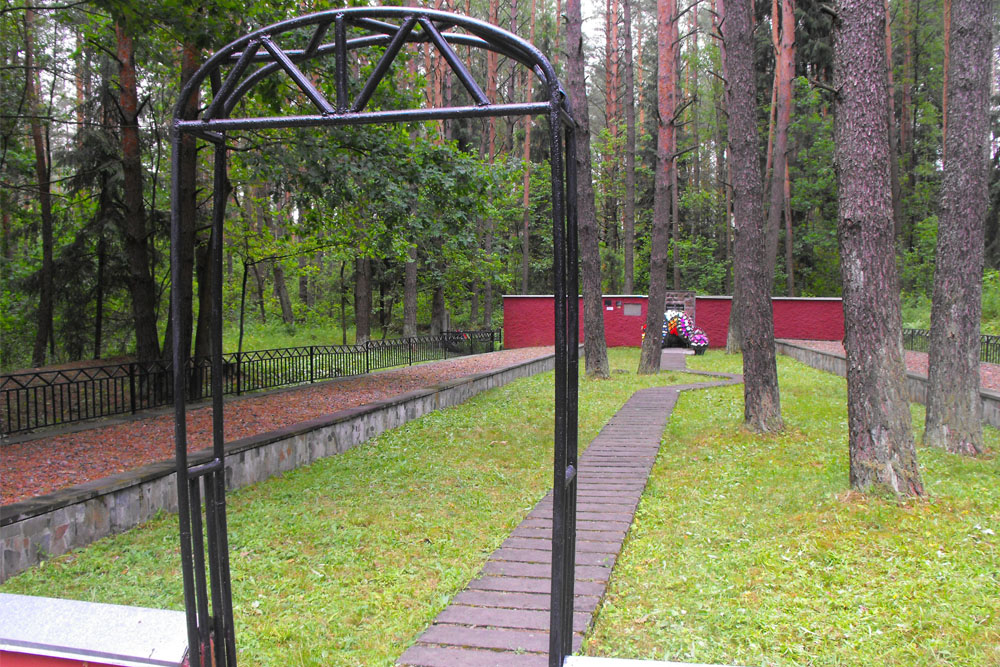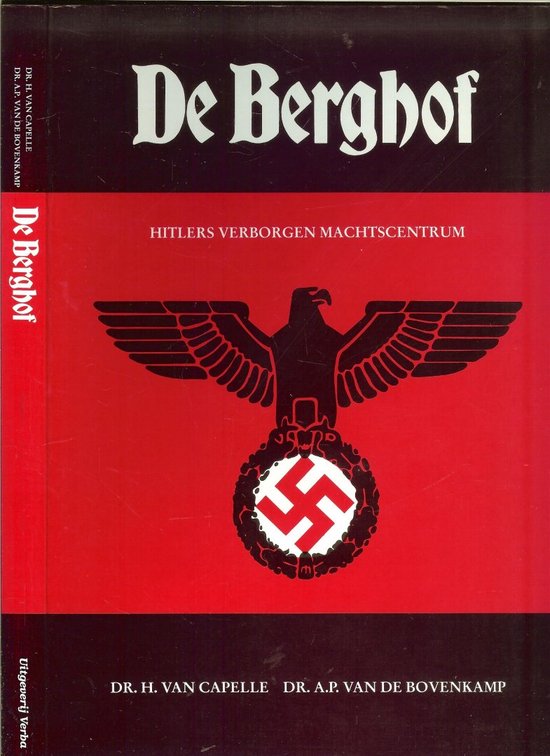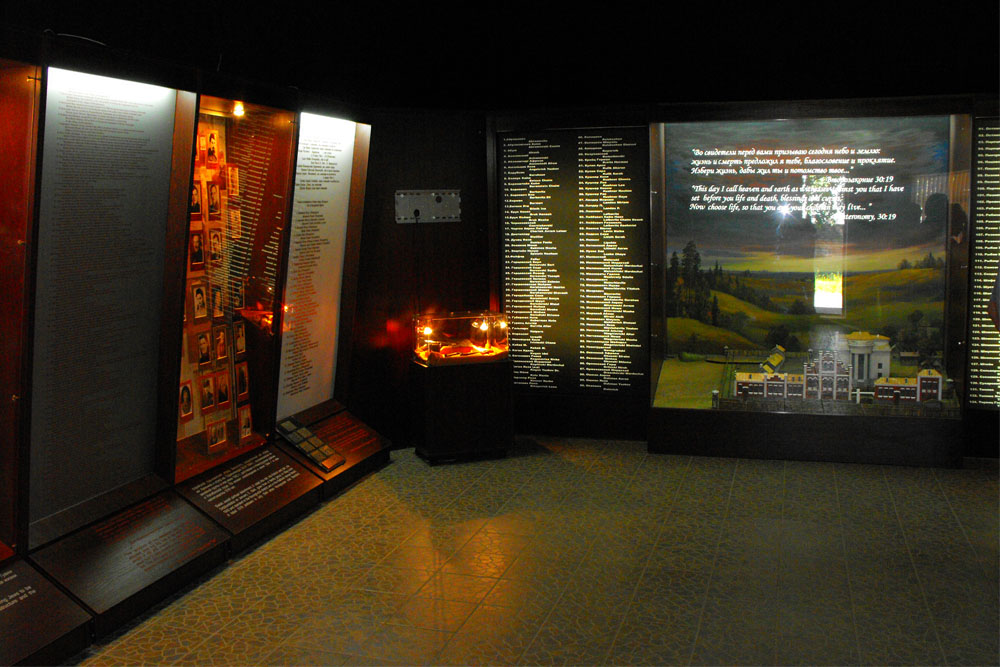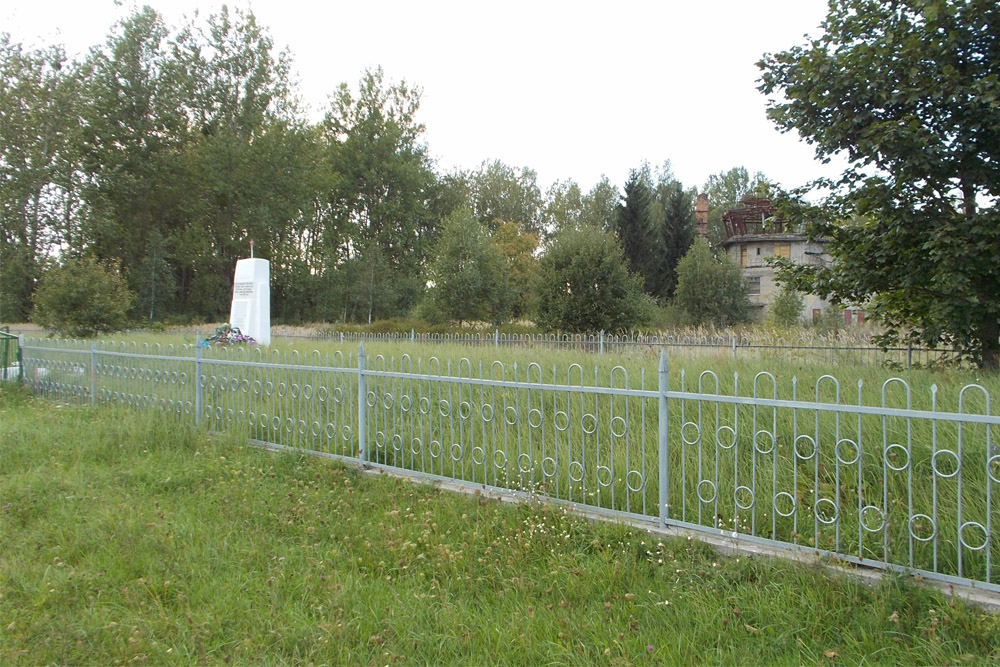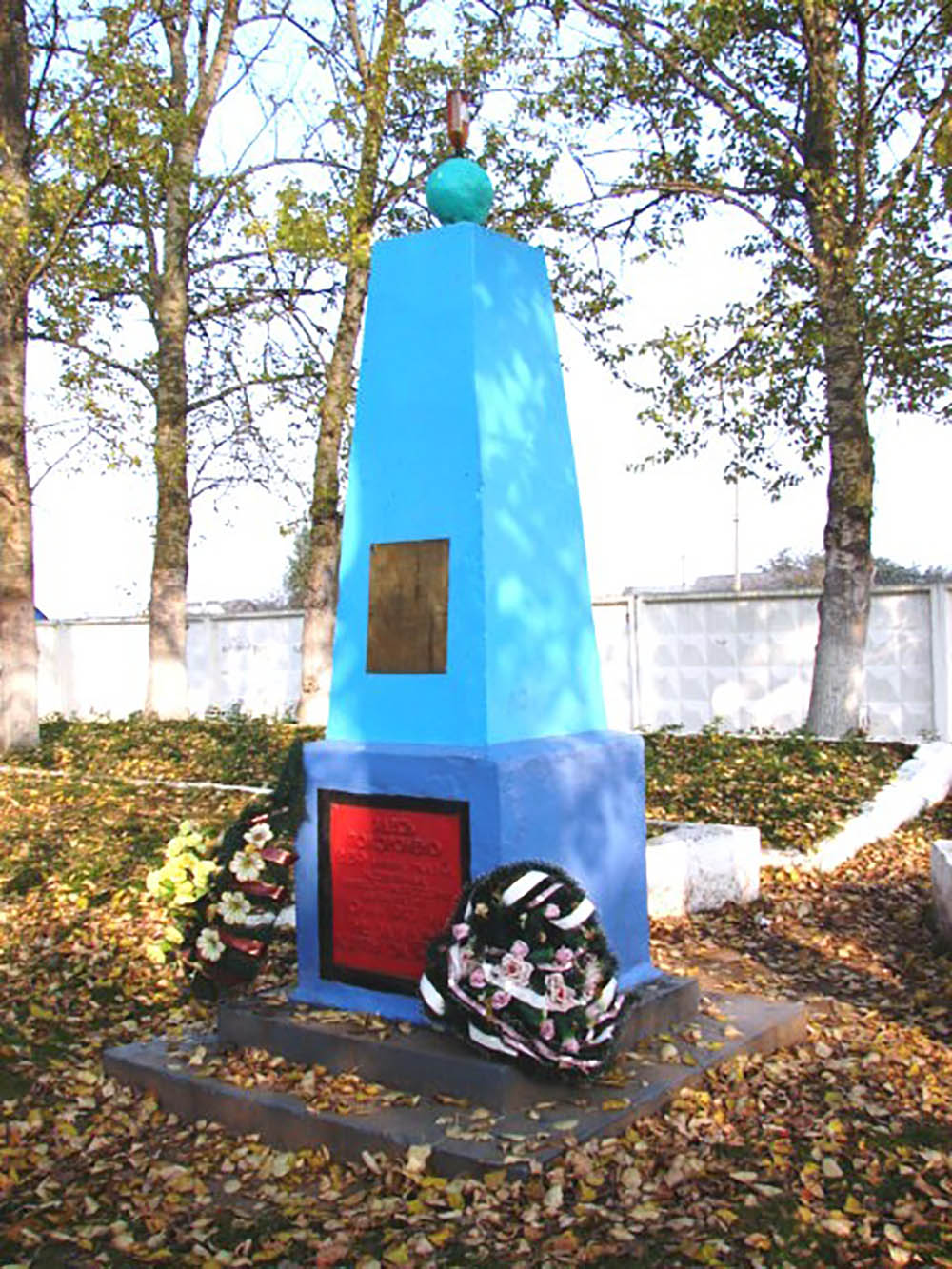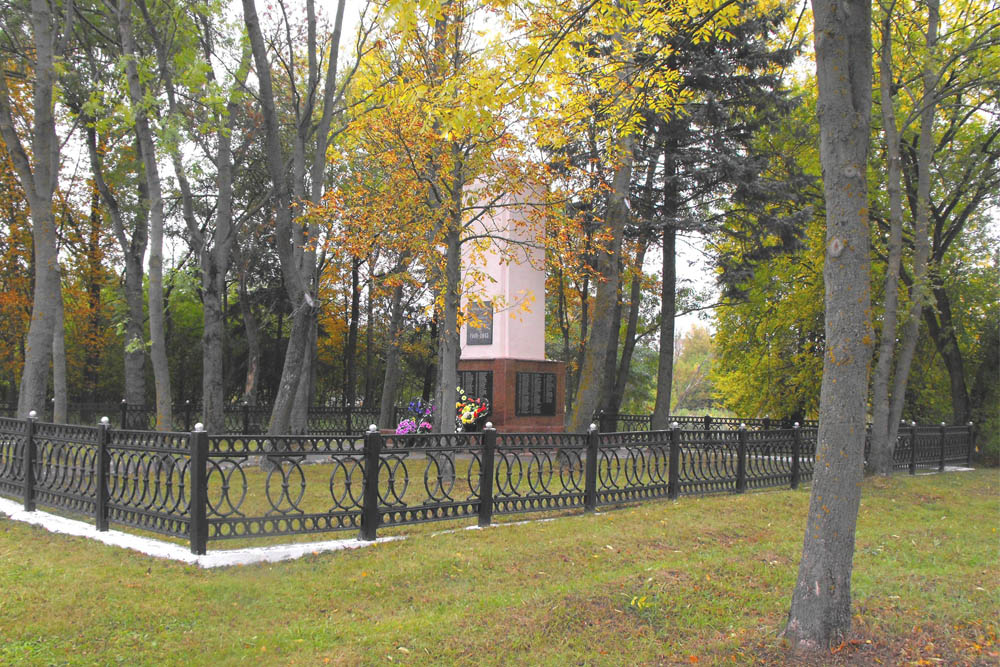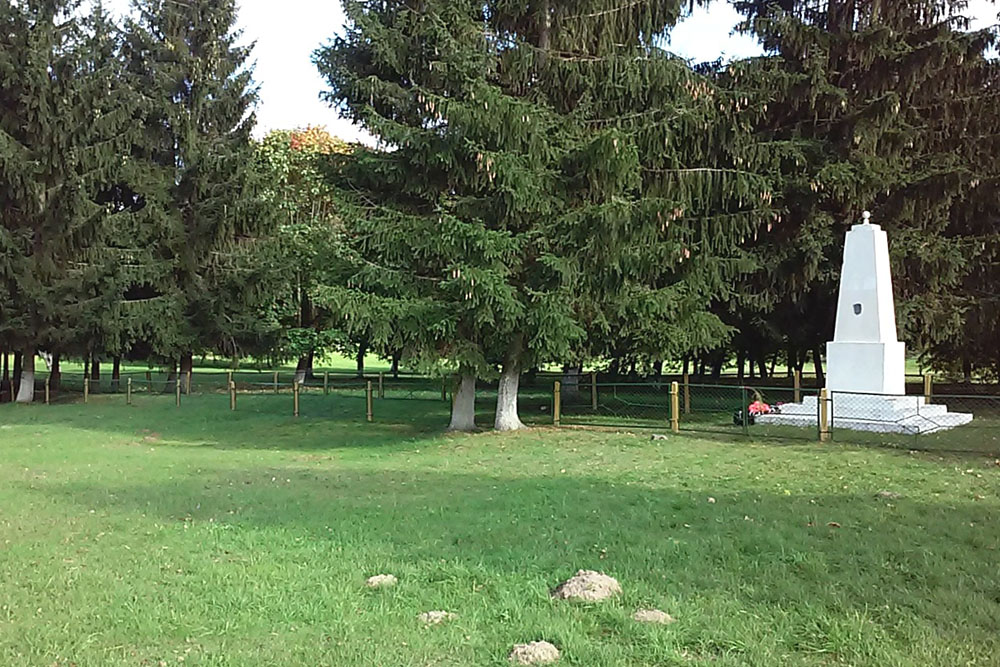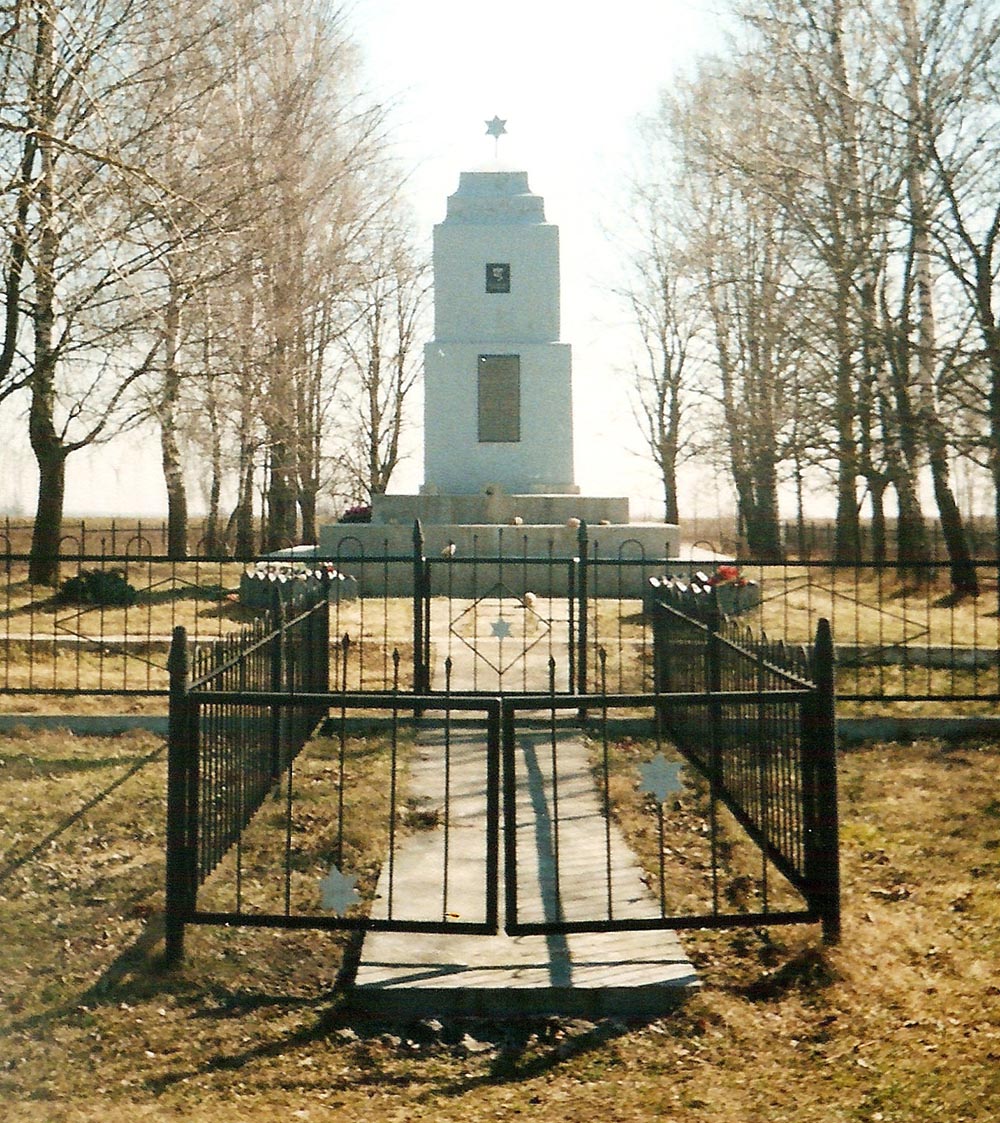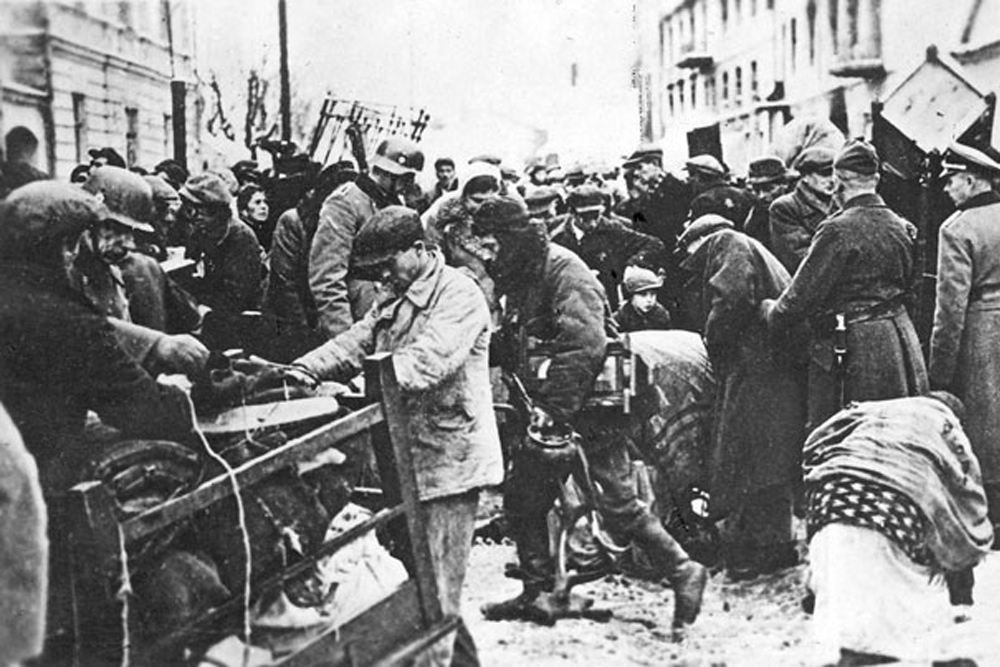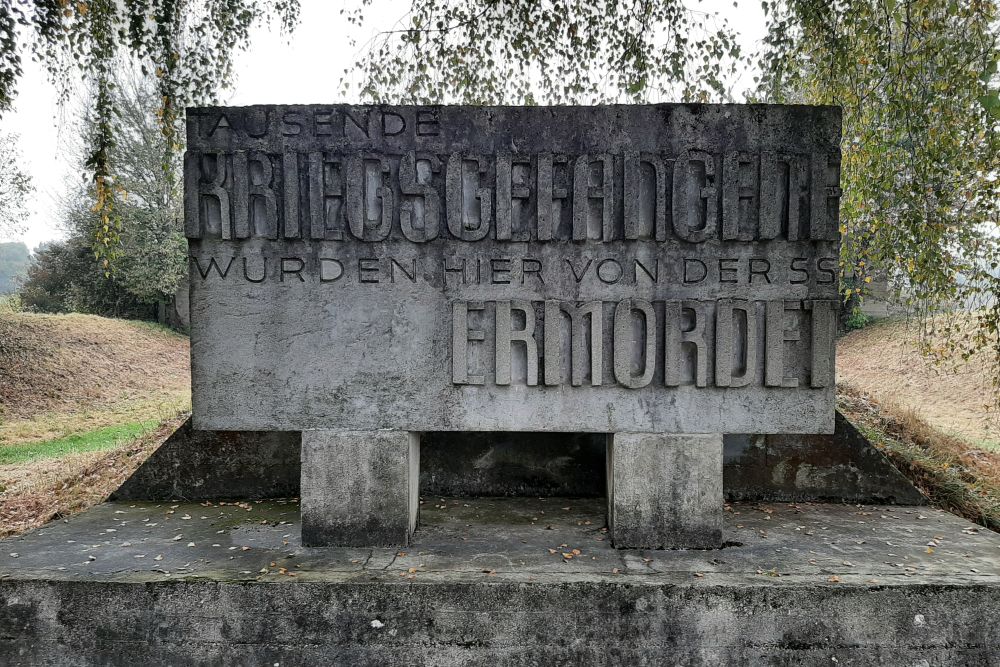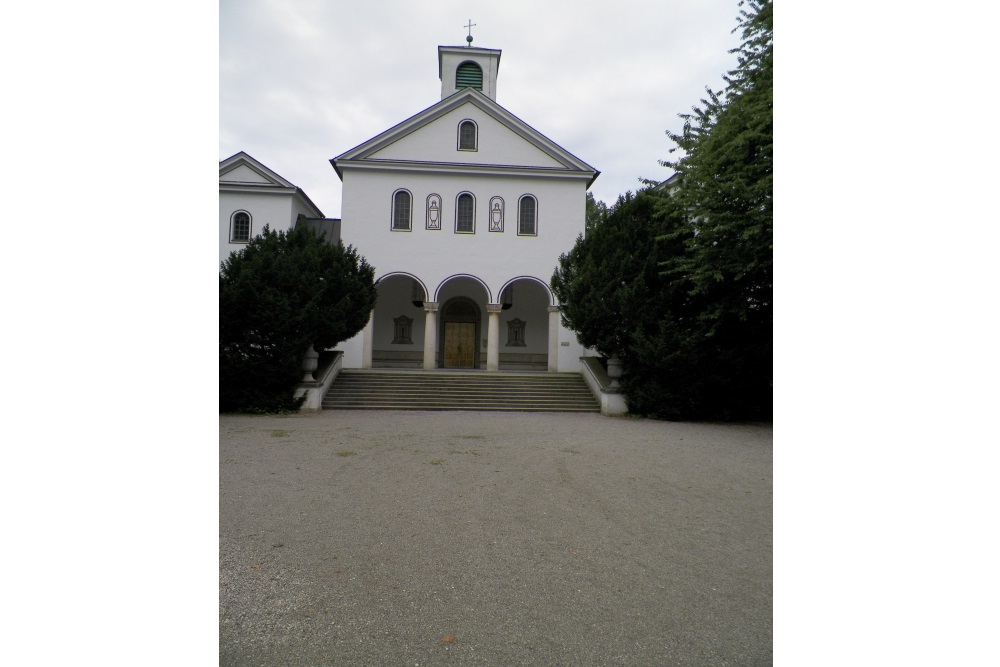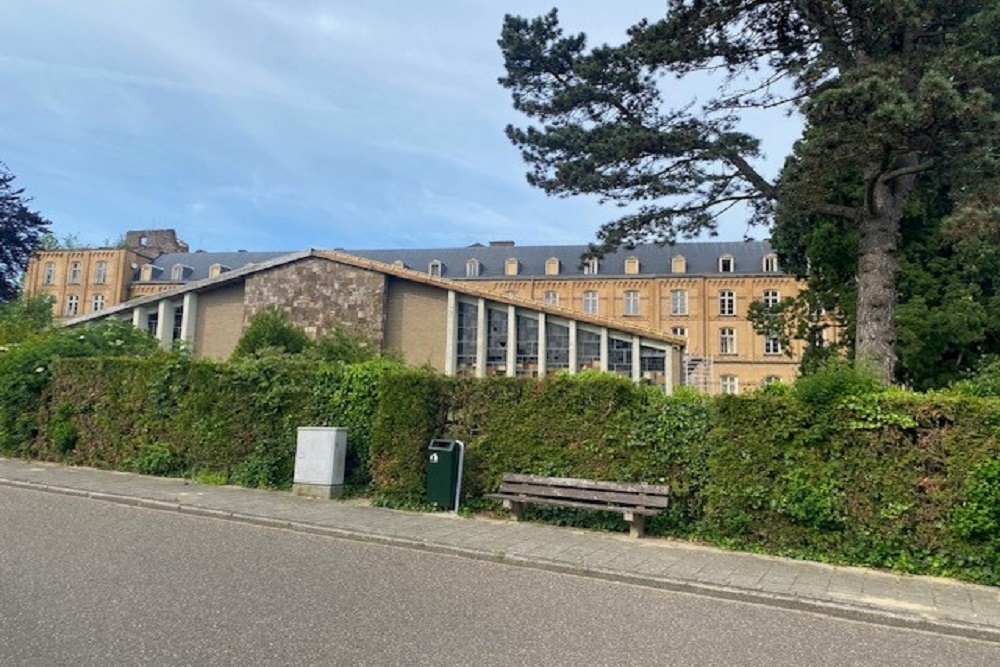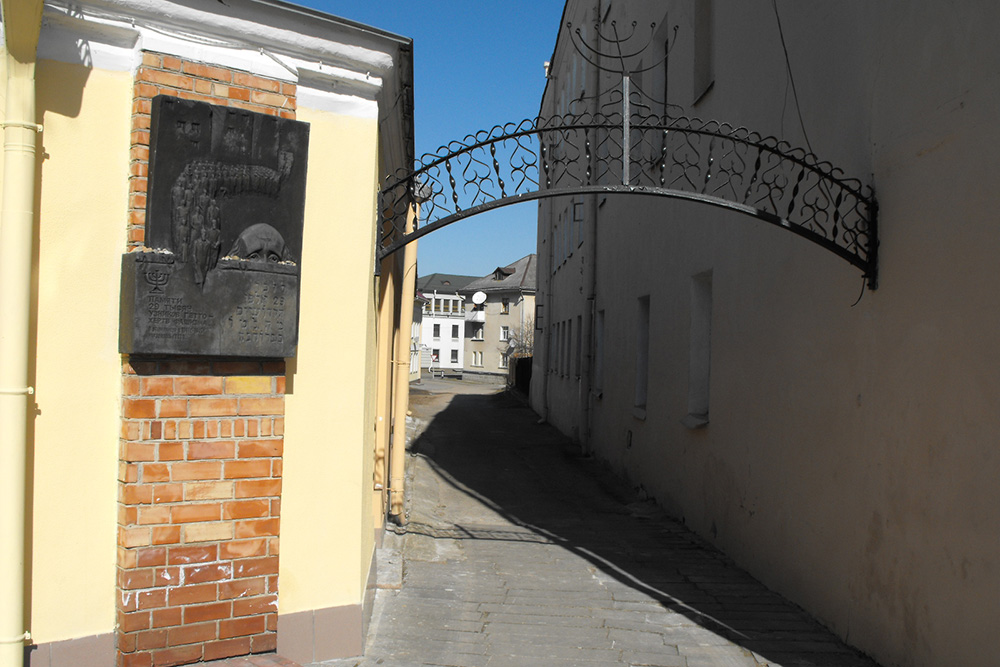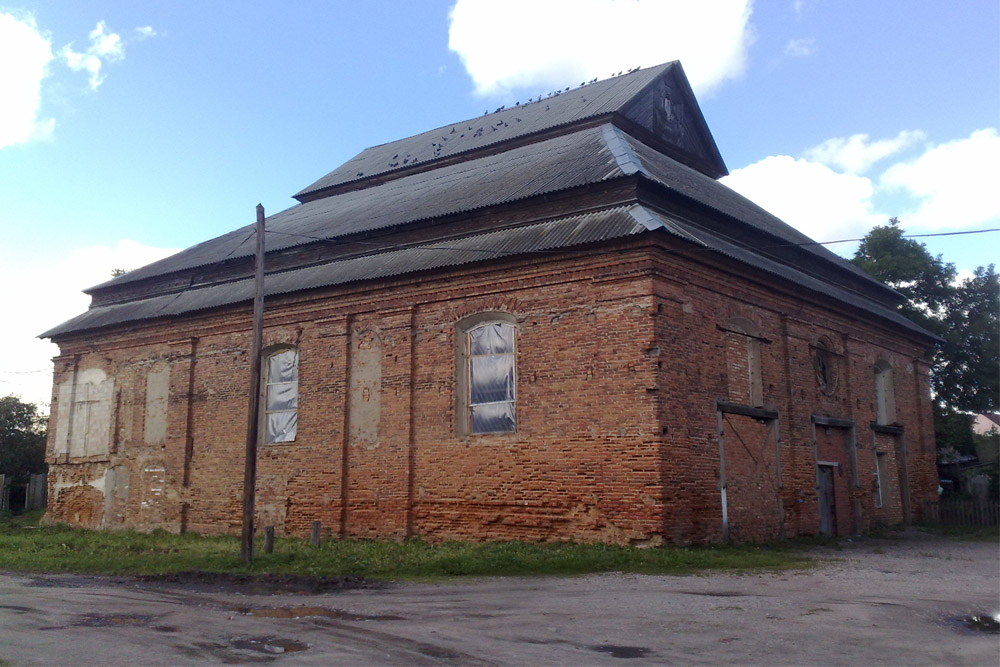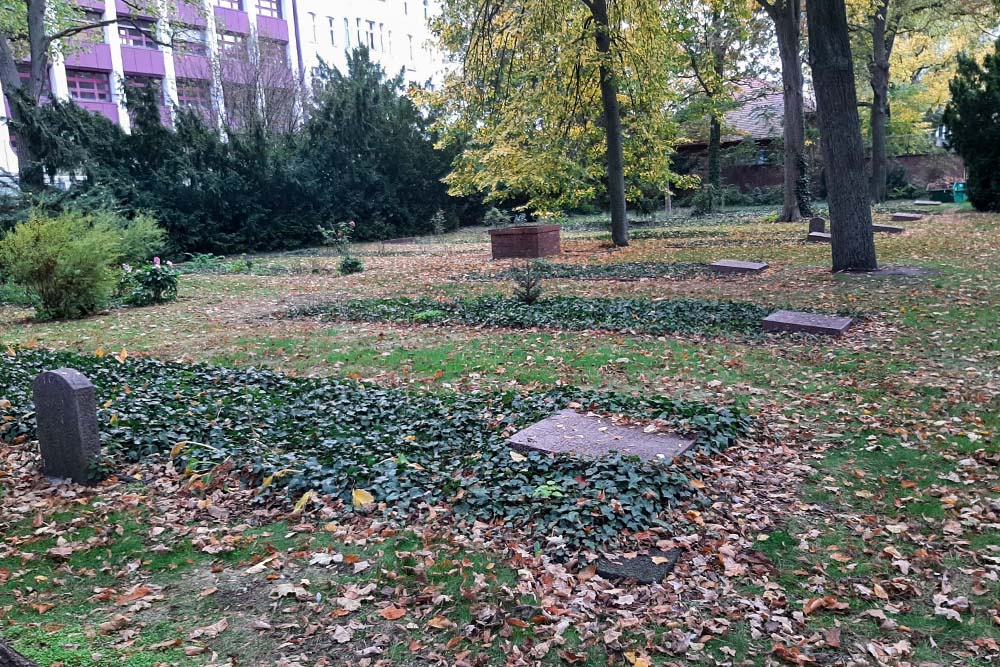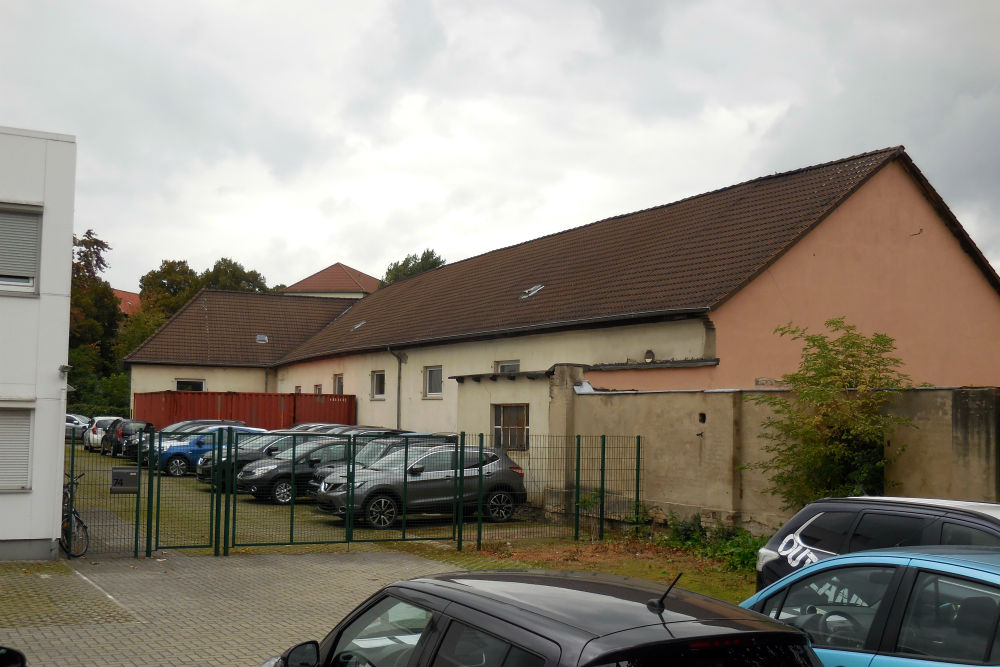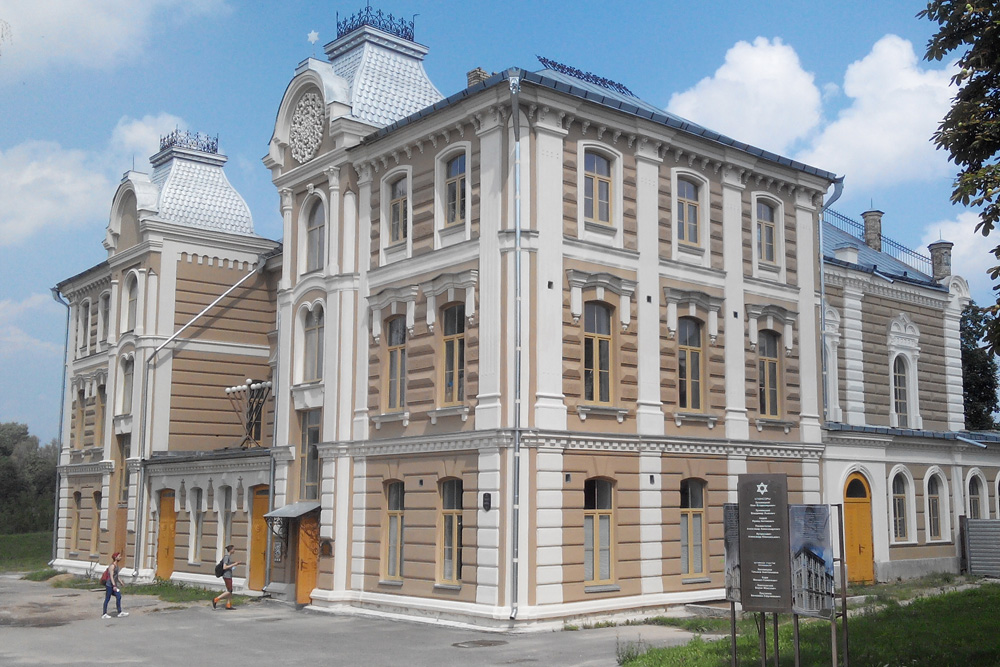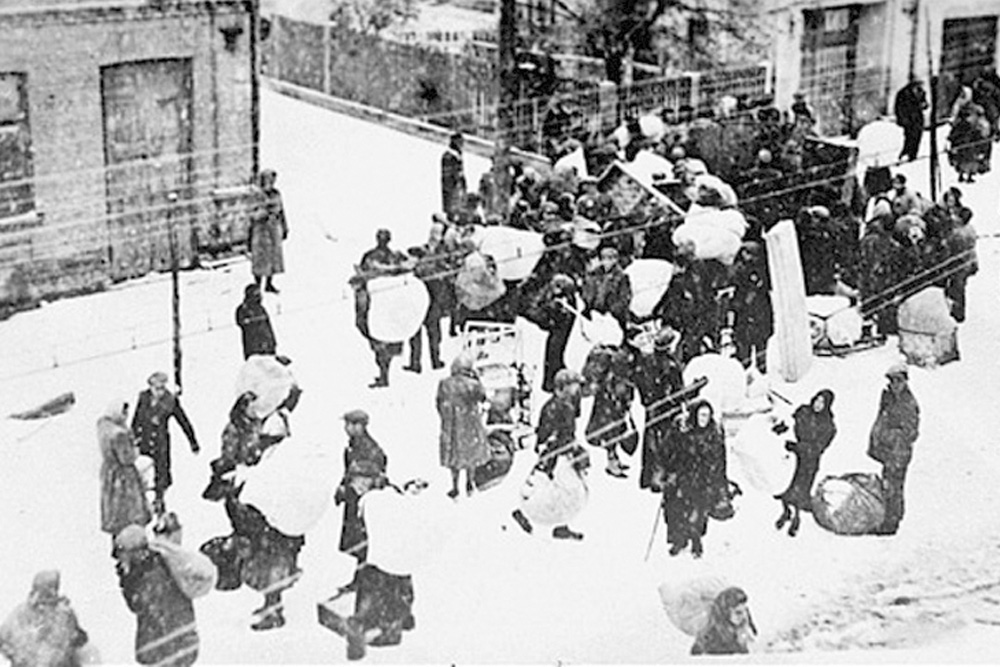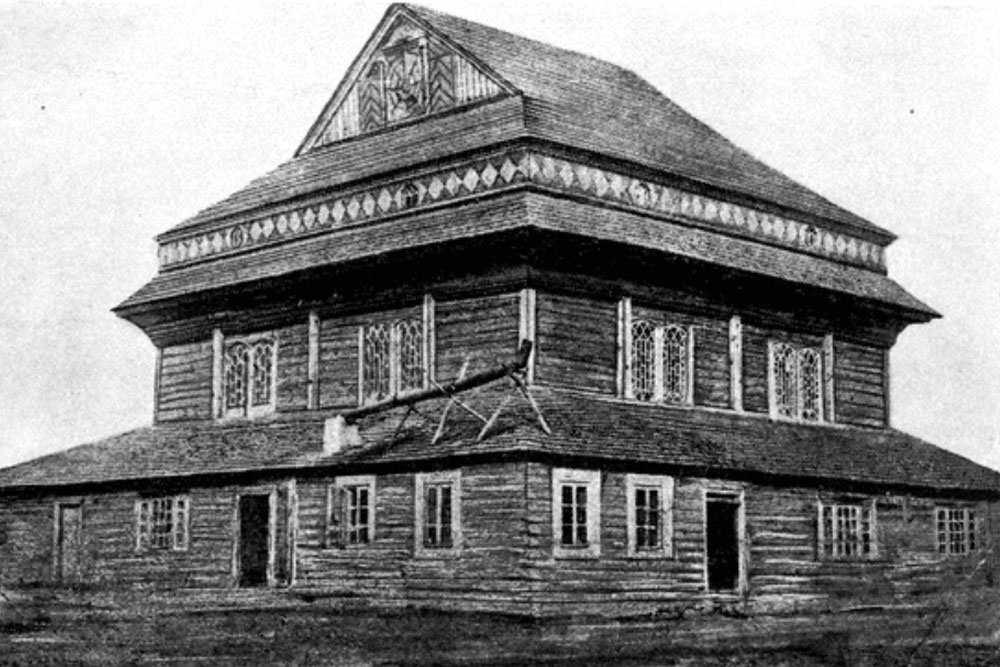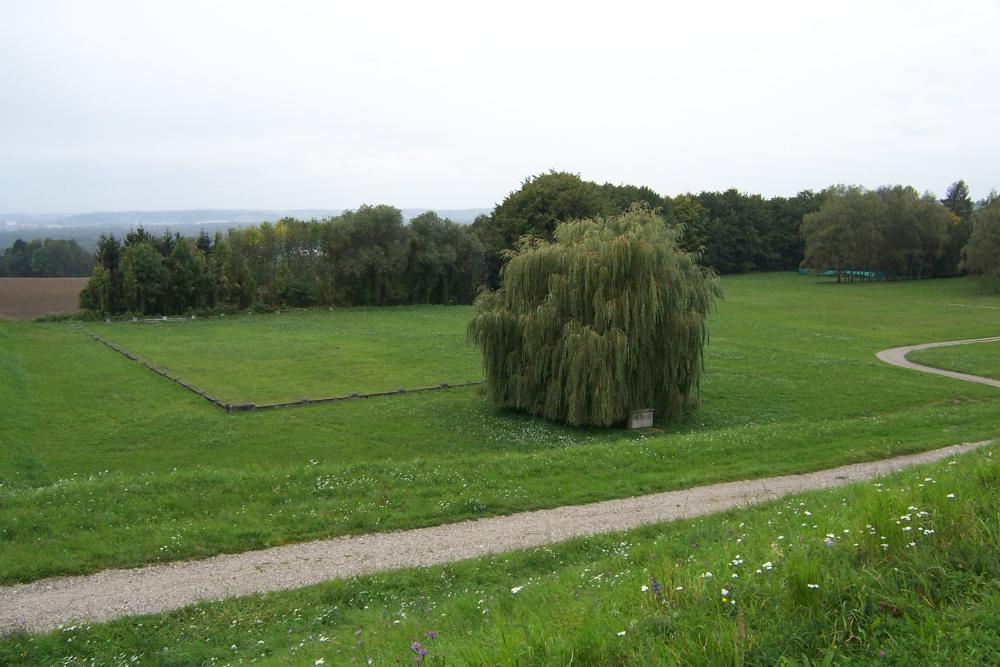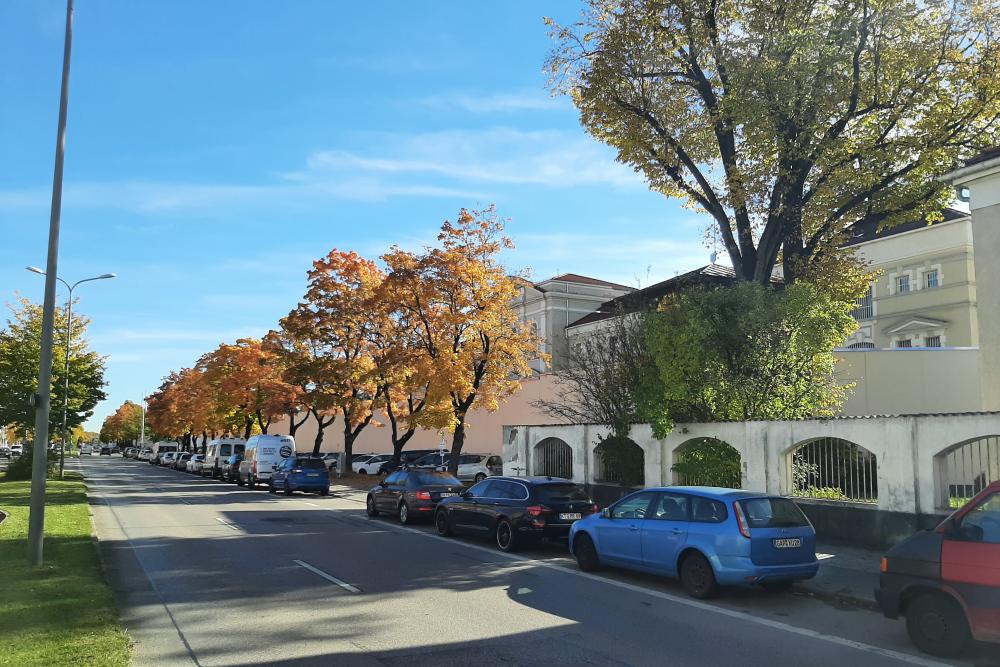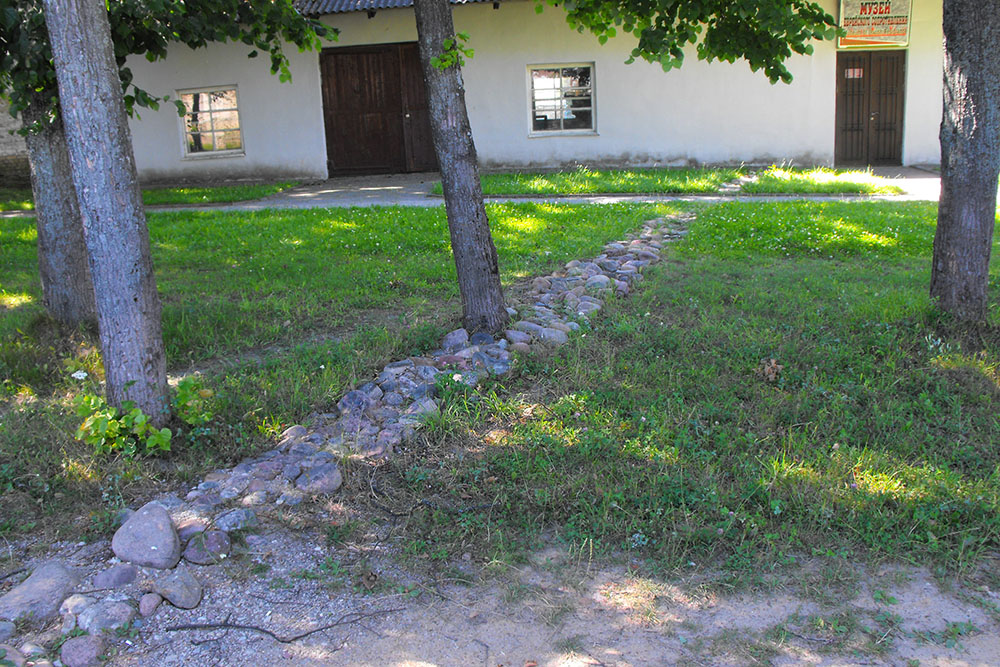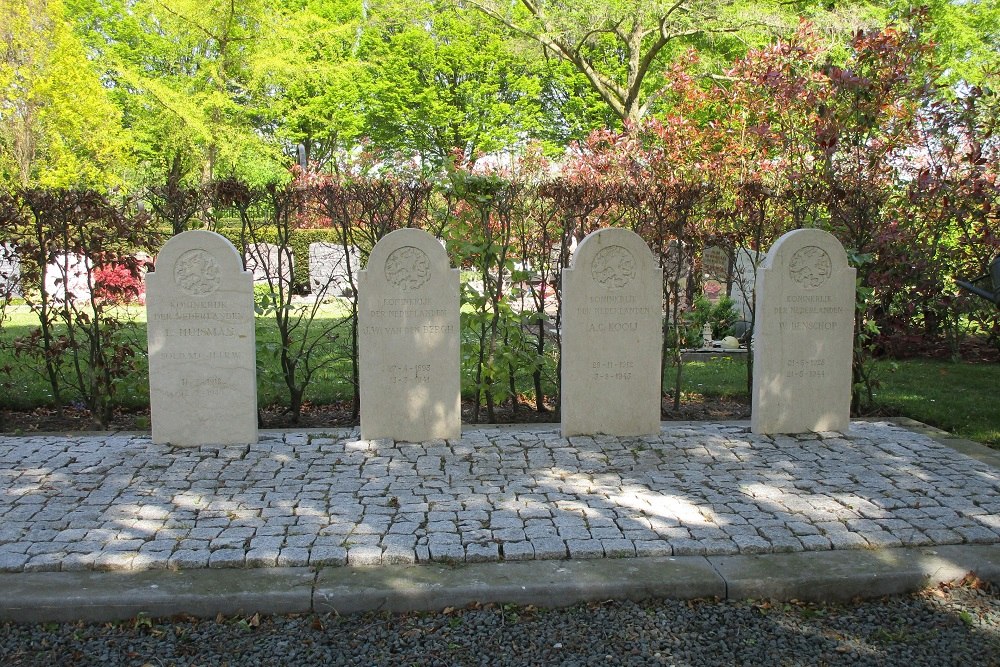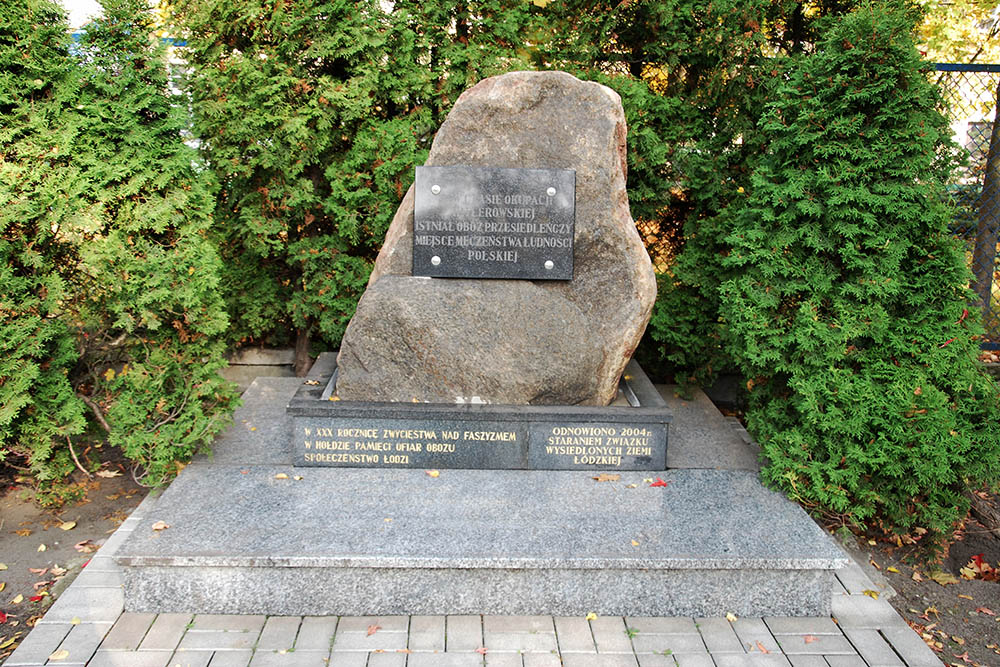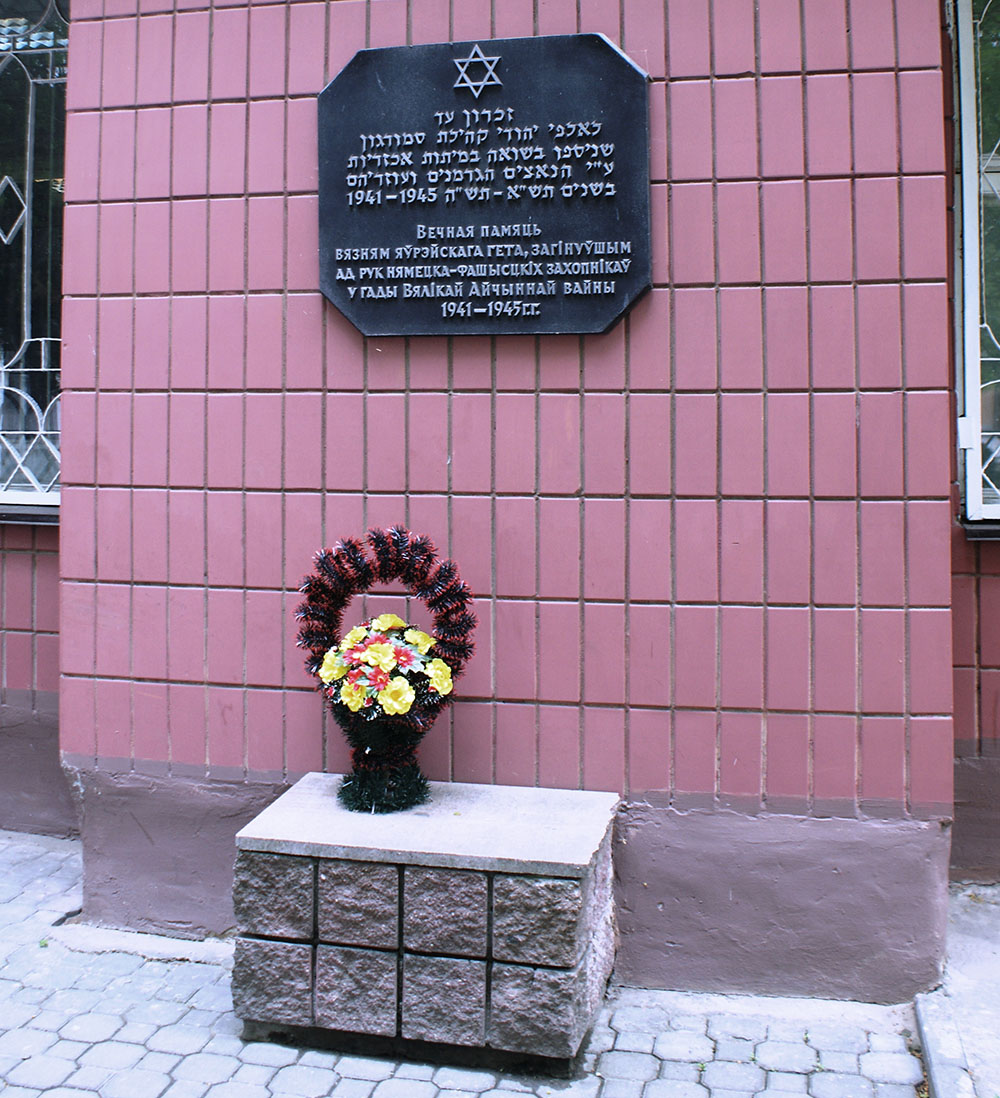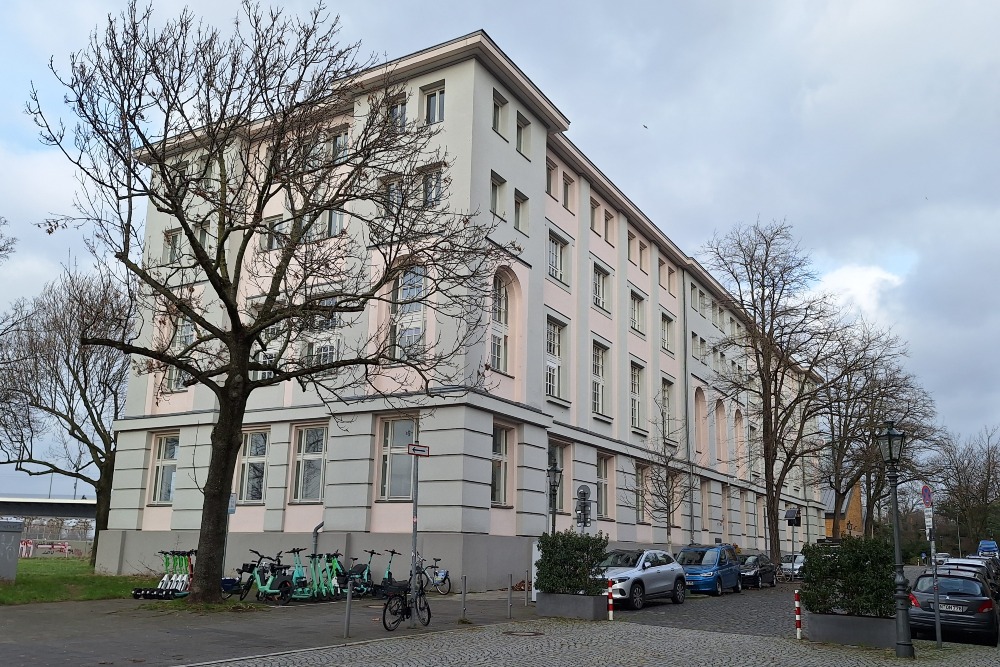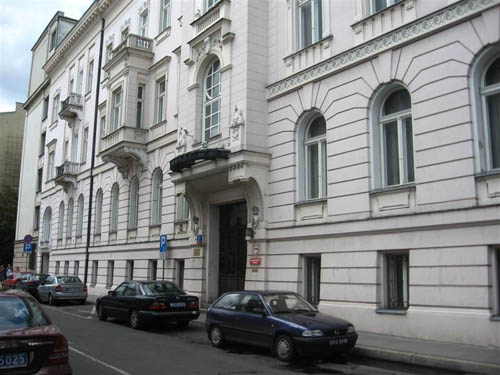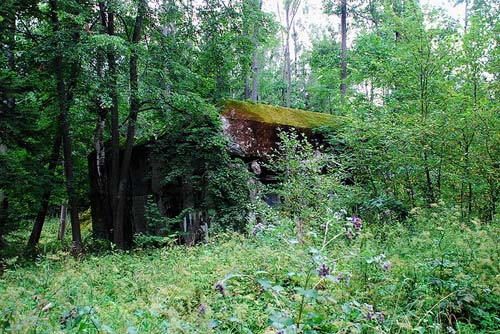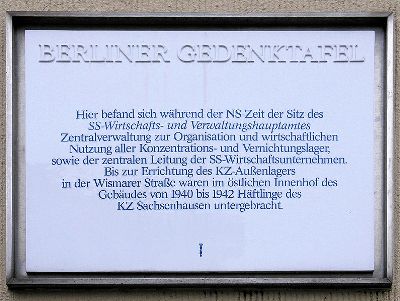Introduction
After the end of World War Two, the Nuremberg trials were held from 1945 to 1949. The best known trial against 24 high ranking Nazis (the IMT) was followed by a series of trials against less prominent war criminals (the NMT). During the trials, all serious crimes were dealt with which had been committed in the Third Reich, including the terror in the concentration camps, the extermination of the Jews, the forced labor by foreign workers, the execution of prisoners-of-war and the deportation of conquered populations. Crimes against humanity by the Nazis and in particular against the Jewish population caused much unrest at home and abroad.
In almost all Nazi crimes, one organization in particular was explicitly involved. This was the Schutzstaffel or in short SS, the major element in political and racial suppression in the Third Reich. The organization was founded to protect Adolf Hitler and other Nazi bigwigs but evolved into an all-encompassing organization which took the main responsibility for safety within the Reich.
Although their guilt of gruesome crimes is a proven fact, many arrested members of the SS remained convinced during the Nuremberg trails they had done nothing wrong. After all, hadn't they done anything but their duty? From Hitler's seizure of power onwards the SS, headed by Reichsführer-SS (RFSS) Heinrich Himmler, had grown into an organization in which honor and loyalty to the Führer was more important than human norms and values. On behalf of Adolf Hitler and his idea of a Greater Germany, men of the SS were willing to commit torture, murder and extermination of so-called domestic and foreign enemies of the German Empire. How could it have come so far that quite normal men, loving husbands and proud fathers transformed into assassins without any notion of guilt and feelings of regret for the atrocities for which they were partly responsible.
In this article, an image will be presented of the origin of the SS and its role within the Third Reich. As the SS was a comprehensive organization, it is impossible to enumerate all of its activities. It is equally impossible to judge all men who have served in the SS. When a certain political movement offers hope after a long period of poverty, misery and insecurity, people will make choices which will possibly be denounced later. Knowing the conditions at that time makes it easier to understand certain choices. We must also realize that with the knowledge about the SS and National Socialism we have today, our image of this organization is very different from the one of young Germans during the years of the Third Reich.
This article is meant to shed some light on the extremely complex organization of the SS. With its many branches, the tentacles of the SS reached into all activities of the Nazis. The essential importance of the SS in the execution of the Nazi plans and the diversity of the organization make up the nucleus of this article. In addition, an image is painted of the rise and fall of the SS. The many crimes of the SS and of Nazism will be the common thread of the story. Based on this information, an image can - hopefully - be made of the men who served the SS and their Führer. Many of them were guilty of crimes but the roots of their crimes can only be found when we have a better understanding of the organization of the SS.
Establishment of the Sturmabteilung (SA)
Right after his appointment to chairman of the NSDAP, Hitler demanded his Party should have a security service at its disposal. The main task of this unit should be the protection of party members and their meetings. On November 4, 1921, the Sturmabteilung (storm troopers) or SA was founded. this organization had its roots in the Turn- und Sportabteilung (gymnastics and sports branch) a paramilitary sports club which in itself had been created from other organizations. Apart from guarding the Party and its representatives, the SA was involved in street fighting against political enemies, pseudo-military exercises and terrorizing Jews and other minorities. Emil Maurice stood at the head of the Turn- und Sportabteilung but once the SA had been founded officially, he was succeeded by Hans Ulrich Klintzsche.
Hans Ulrich Klintzsche was an officer of the Brigade Ehrhardt. This was a Freikorps made up of naval officers. In 1920, this unit was involved in the so-called Kapp putsch. The unit moved into Berlin and appointed the right-wing journalist Wolfgang Kapp as chancellor. The coup failed and Brigade Ehrhardt was prohibited. The integration of the brigade into the SS was an excellent opportunity for the men of the brigade to continue their struggle against the German government in Weimar. The leaders of the SS quickly recruited a small army in which members of former Freikorpse were also incorporated. In the cities, many laborers joined the SA. Their membership was mainly a means to escape the boredom and the tension during the economic crisis. Comradeship, alcohol and the street brawls against political opponents made the SA attractive to them.
Ernst Röhm, a German army officer and a veteran of World War One was one of the most important persons within the SA until 1934. Although he had been the leader of the SA only between 1931 and 1934, prior to that time he had an enormous influence on the policy of the organization. He was a close friend of Adolf Hitler and one of the few who had the privilege to address the NSDAP leader with the more familiar du As a military, Röhm saw the SA as an army with which he could eventually grasp power in Germany. To this end, he did need the help of the NSDAP and Hitler who, as a popular speaker gained more and more followers among the German population. Hitler equally needed the help of Röhm though as a prominent face and the SA as an army for propaganda. Contrary to Röhm, he didn't consider the SA as organization that would take over power but only as a means to climb to power himself. These conflicting interests would later cause major problems within the Party.
Stoßtrupp Adolf Hitler, early predecessor of the SS
Within the SA, the so-called Stabswache was responsible for the protection of Adolf Hitler and other prominent party members. Although Hermann Göring, one of Hitler's most important followers, was in charge of the SA in 1923, Hitler's authority over the organization wasn't unconditional. Within the SA, Röhm was the informal leader and in fact he had more power than its formal leader Göring. Although Röhm and Hitler continued to work well together to realize their mutual plans, it was doubtful whether Röhm and his SA would continue to support and protect the NSDAP and its prominent members. This was the reason for the establishment in May 1923 of the Stoßtrupp Adolf Hitler. This personal bodyguard of Hitler was also the foundation for the development of the SS.
The extensive organization which would become the Schutzstaffel, wasn't recognizable in the Stoßtrupp yet. The unit was established in the bowling alley of café-restaurant Torbräu in Munich. In total, 22 members of the NSDAP had been called up by Joseph Berchtold, a dealer in stationary, and Joseph Schreck, deputy treasurer of the NSDAP. Two others present were Emil Maurice, former leader of the Turn- und Sportabteilung and Ulrich Graf, a butcher and amateur wrestler. These two would spend a considerable time in Hitler's vicinity as his personal body guards. Emil Maurice later became Hitler's driver as well. He was sacked though when it turned out he had a relationship with Hitler's niece and lover, Geli Raubal. All men present in Torbräu had something in common: they were veterans of the war and fanatical followers of Hitler's right-radical politics. They all had proven themselves during political brawls in the beer halls and on the streets of Munich.
The men founded the Stoßtrupp with the goal to protect Hitler against political opponents who regularly appeared during his speeches and others in the beer halls of Munich. In order to distinguish themselves from the SA, the men of the Stoßtrupp wore caps with a skull and cross bones on it. This emblem was copied from the 1. Garde-Reserve-Pionier-Regiment, a unit which had been deployed with flame throwers at the front in World War One. As early as two centuries before, this emblem was used by the Black Hussars of Frederic the Great. After World War One, members of Freikorpse frequently wore helmets with this emblem. The skull and cross bones was to frighten the enemy and also a sign of death defying fighting spirit and endless loyalty to the leader. Hence, this skull indicated the wearer was ready to give his life for the leader and the was exactly what the members of Stoßtrupp Hitler were willing to do.
The SA and the Stoßtrupp during the Bierkeller putsch
In the early 20s, the German Freistaat Bayern -free state of Bavaria- was ruled by a rightist threesome headed by Gustav Ritter von Kahr. This 'government' wanted to separate this Freistaat from the rest of Germany and Hitler thought to capitalize on it. He didn't want to separate Bavaria from the rest of Germany though, he wanted to take power over all of Germany. On November 8, 1923, Hitler made a clumsy attempt at a coup. He was supported in this by the SA and also by men of the Stoßtrupp Adolf Hitler to protect him.
The putsch was launched during a public meeting of the Bavarian government in the Bürgerbraukeller in Munich. Hitler wanted to take over the meeting and persuade those present to advance with him on the 'red' Berlin to oust the government. Subsequently, Hitler would form a new right wing government along with the popular general Erich Ludendorf and Gustav Ritter von Kahr. The men of the Stoßtrupp in café-restaurant Torbräu had been informed of Hitler's plans and were equipped with machineguns, carbines and hand grenades.
Many of Hitler's most loyal followers were present in the Bürgerbraukeller, including for instance Hermann Göring -at the time the leader of the SA- and Rudolph Hess - at the time SA leader of the students. Hitler jumped onto a chair, fired at the ceiling and climbed on the stage via a table and proclaimed the revolution. Gustav Ritter von Kahr and the other two leaders of the Bavarian government were addressed backstage by Hitler and some of his followers and were compelled to take part in the march on Berlin. Subsequently they were released and even though Hitler had expected them to join the coup, this did not materialize. Meanwhile Ernst Röhm and his men, including the later RFSS Heinrich Himmler, occupied the building of the Bavarian Ministry of War. They were beset though by the army and the police. Hitler and Ludendorff decided to march on the Ministry with their followers to relieve Röhm. While marching through the streets of Munich, Hitler hoped the citizens would join the crowd.
Hitler and his followers were stopped however by some hundred police officers at Odeonplatz. A bloody confrontation ensued. Ulrich Graf announced that Hitler and Ludendorf were coming, hoping the police would make way for the popular general. The officers however held their ground and suddenly one of them was hit by a bullet. A fire fight erupted in which Hitler's friend, Max Erwin von Scheubner-Richter was mortally injured. He fell to the ground, pulling Hitler with him. Ulrich Graf was hit as well, he probably caught the bullets aimed at Hitler. Graf survived the hail of bullets and because he had wanted to offer his life for Hitler, he became a myth. Hitler's attempt at a coup had failed however and a blood-soaked swastika flag was left behind on Odeonplatz.
Hitler, Röhm, Ludendorf and others involved were prosecuted and on April 1, 1924, Hitler was sentenced to five years in prison. He would be released on December 20, 1924 for good behavior. Ludendorf was acquitted and Röhm received a mild sentence like many of the participants in the putsch. He was sentenced to 15 months but was released soon on his word of honor. The SA and the NSDAP were banned so Röhm had to find another way to develop his SA. Hitler had other plans though and decided to grasp power in the future in a legal way. He wouldn't launch a coup anymore to take power.
Frontbann and the establishment of the Schutzstaffel or SS
While Hitler was in prison, Ernst Röhm wasn't inclined to give up his fight for a Nazi takeover of power. The fact that the NSDAP and the SA had been banned didn't deter him from his plans. He founded the Frontbann as a replacement for the SA. Within the Frontbann, the various para-military organizations were united and partly thanks to his efforts, the organization enjoyed an enormous expansion. In November 1923, the SA still numbered 2,000 members; when Hitler was released from prison in 1924, Röhm's Frontbann numbered no less than 30,000 members. After his release, Hitler indicated he no longer felt the need for a para-military organization as he no longer planned to take power over Germany by force. Moreover, he had lost his trust in a party army he had no control over.
When on February 27, 1925, the ban on the NSDAP and the SA was lifted, Hitler wanted the Frontbann to be incorporated in the party. The organization would again be called SA. Hitler only wanted to deploy he SA as guards during party rallies and for propaganda purposes. Röhm was diametrically opposed against Hitler's plans and after a public feud with Hitler, he left for Bolivia on April 30, 1925 where he found employment as a military instructor. From 1926 to 1930, Franz Pfeffer von Salomon was the leader of the SA. Admittedly, he didn't want the SA to be slavishly subordinate to the party, he didn't aspire to the extensive plans for power Röhm envisaged either. Without the charismatic Ernst Röhm, the SA had been robbed of its figurehead and its importance was limited. Each local SA branch went its own way and so, the organization no longer posed a threat to Hitler's position of power.
Hitler was the sole ruler of the National Socialist movement once again and with the failed putsch and the struggle for power against the SA still on his mind, he founded a new body guard in April 1925: the Schutzstaffel or SS. This security escort should also protect him against potential opponents within the party or the SA. Hitler explained his decision for the establishment of a new bodyguard as follows:
'At the time I said to myself I needed a bodyguard that, as small as it might be, should be unconditionally loyal to me and even act against its own brothers. Rather than 20 men from one town - provided you could trust them totally - than an unreliable crowd.'
Julius Schreck was to establish the SS and became its first leader: Reichsführer-SS. In the same restaurant in which the Stoßtrupp Adolf Hitler had been established, the members of the Trupp were called together by Julius Schreck in April 1925. The task of the SS remained equal to that of the Stoßtrupp but contrary to this earlier unit, which was active in Munich only, the SS was established in other cities as well. These local SS branches or Standarten were kept small on purpose. From 1926 to 1928, the SS numbered 12 Standarten. These local units were made up of a group of 20 men each with its own leader, the Standartenführer. The German capital Berlin was the only city with two Standartenführer with 20 men each. As the SS was still a formal unit of the SA, its members wore the brown uniforms of the SA. They were distinguishable though by the black cap with the skull and cross bones and a black-bordered swastika band on their arm.
Although the selection criteria of the SS were considered elitist later on, in the beginning they were rather petty-bourgeois. One of the criteria was for instance that 'chronic drinkers, chatterboxes and people suffering from other disorders' were not eligible for membership. Despite these myopic demands, the men of the SS considered themselves something like the Pretorian Guard. Just like the legionnaires of Roman times, the SS men protected their leader with their lives. Being an elite corps, they swore unconditional loyalty to Adolf Hitler. Apart from the criteria mentioned earlier, the men were to meet the following demands: aged between 23 and 25, two people had to vouch for them, they should be healthy, sturdily built, at least 5 feet 5 and of course, they should be 'Aryan'. Selection criteria and unconditional loyalty to the Führer formed the base and throughout the existence of the SS, these conditions remained of great value within the organization. The criteria were subject to change however and practical exceptions were made in the course of the history of the SS.
The first public action of the SS was during the party rally on July 3 and 4, 1926 in Weimar. 3,600 men of the SA and 116 of the SS were present. These party rallies, a mixture of rituals, speeches and marches would be held in Nuremberg from 1927 onwards.
At the rally in Weimar, the so-called Blutfahne would be handed over to the SS. This was the blood-soaked flag that during the Bierkeller putsch had been left on Odeonplatz after the confrontation with the police. The flag got an important status and with it being handed over to the SS, Hitler gave the elitist movement his blessing. During subsequent SS rituals, the flag was carried by SS-Truppführer Jakob Grimminger and during the party rallies in Nuremberg, the flag was presented as well.
Discipline in the SS and chaos in the SA
After its establishment, the SS was totally subordinate to the SA as far as membership was concerned. The SS did distinguish itself in ways other than the SA though. Contrary to the SS, the SA didn't apply selection criteria. Any 'Aryan' German who liked a fight and sympathized with Nazi ideology was welcome in the SA. This meant the organization was mainly made up of men without discipline consuming massive amounts of alcohol to fuel their violent behavior. In German beer halls and pubs, a brown subculture came into being in which comradeship, alcohol and brawls were the central motives. The disciplined SS shied away from alcohol and their motive was their honor and loyalty to the Führer They considered the SA rag tag proletariat and in fights in public and drinking orgies the SS wasn't involved as this was in violation of the authoritarian rules of the SS. The slightest transgression of the SS rules carried a fine or discharge.
Certainly during the early years, the rigid disciplinary rules of the SS can almost be compared to those of a monastic order. RFSS Erhard Heiden -from 1927 to 1929- issued this order to his men:
'The SS men shall never participate in discussions during meetings of members. The evenings on which lectures are given shall serve as political education of the people during which the SS men shall not smoke nor leave the room. The SS men shall remain silent and shall never interfere in affairs he has nothing to do with.
The differences in discipline between SA and SS became ever clearer. Headed by Oberster SA-Führer Franz Pfeffer von Salomon, the SA enjoyed a massive expansion from 1929 onwards when the economic crisis erupted. The population was impressed by its continuous presence and its massive display of power. Especially in the cities, a growing amount of criticism about the brown shirts could be noticed. Whereas the SS kept its distance from street brawls, the SA was involved in them more and more often. People considered the chaos and the disorder, inflicted daily by the SA threatening and shameful.
During the party rally of 1929 in Nuremberg for instance, real battles broke out between the SA and its opponents. SA men beleaguered a tram, a pub flying the republican flag was demolished, a meeting of members of a trade union was beset by throwing beer bottles and a police officer was abused. In 1929, the Prussian police reported 580 street fights in which the SA was involved. In 1930, this number had risen to 2,500 and in 1932 to 5,300. Martin Bormann, representing the department of personnel of the party reported 110 SA men injured in 1927 and in 1930 this number had increased to 2,506. In the first half of 1932 during the election campaign, 86 people lost their lives and during the last six weeks before the elections, 72 victims killed were added to this total.
This public misbehavior was bad publicity for the NSDAP. In the beginning, Hitler waived the complaints about the SA by arguing that the SA was no educational institute for daughters of well-to-do origin but a unit of raw warriors. Criticism of the SA increased however but the brown shirts on their part voiced more and more criticism towards the party. SA men increasingly criticized the top officials of the NSDAP and they demanded more funds for the National Socialist battle they were waging. In the summer of 1930, a conflict between the party at the SA erupted.
Walter Stennes' failed revolt
After Ernst Röhm had left for Bolivia in 1925, the party treated the SA as some auxiliary force, not as a para-military organization. The SA was subordinate to the party organization and many SA members were dissatisfied with it. One of those leaders was Walter Stennes. Apart from a more independent role for the SA he wanted to beg Hitler for more financial support. He also demanded that a few seats in the Reichstag -German parliament- be taken by members of the SA. He travelled to Munich but wasn't given permission to speak to Hitler. Stennes' subordinates subsequently laid down their work in protest. They refused to participate in propaganda activities or protect party members. On August 30, 1939, this led to an eruption when members of the SA attacked the party building in Berlin. That day, Joseph Goebbels had called a large meeting in the Sportpalast. Goebbels had demanded the SA to be present but Stennes ordered his SA to be present elsewhere in Berlin at a parade. Subsequently, the SA attacked the party building that was being guarded by the SS and they broke through the defense.
Hitler was notified about the revolt of Stennes' men and he hurried to Berlin to prevent further mutiny. Hitler talked with several representatives of the SA and after two nocturnal meetings with Stennes, the dissatisfaction within the SA was dampened for the time being. On September 1, 1930, Hitler called a mass meeting of some 2,000 SA members and he announced, under loud cheering, he would take over the highest leadership of SA and SS. Pfeffer von Salomon meanwhile had stepped down as Oberster SA-Führer three days before. The function itself was voided as well. SA leaders would henceforth get the function Chef des Stabes -chief of staff. Hitler held this function in 1931 and transferred it afterwards. Until the end of the war however, he remained the highest leader of the SA and other organizations within the party.
After the revolt of Stennes and his followers, it became clear that Hitler's power over the SA was slipping away. It needed a leader who didn't feel the need of an internal power struggle and moreover, one who could get the organization back in line. After all, Hitler was still not in power in Germany and in order to achieve this, he badly needed the SA as a means of propaganda. Revolts and eruptions of violence would have to be prevented as this was negative propaganda for the party. Hitler knew only one person sufficiently capable as leader of the SA and that was his former friend Ernst Röhm. Towards the end of 1930 he had returned from Bolivia and in 1931, he was appointed chief of staff of the SA. It took him a lot of trouble to get the SA back in line and moreover, he hadn't forgotten his previous conflict with Hitler.
Although the revolt of Stennes and his followers had been dampened for the moment, there still was a great deal of dissatisfaction within the ranks of the SA. Stennes still demanded seats in the Reichstag and advocated an anti-parliament strategy and a seizure of power by force. Almost all SA leaders in eastern and northern Germany shared Stennes' feelings. On March 31, 1931, Stennes was fired by Hitler. Stennes didn't accept his discharge and under his leadership, the SA occupied the party central office and the editorial office of the Nazi paper Der Angriff in Berlin. The revolt was stopped quickly because the Berlin police helped the party to regain control over its headquarters and the editorial office. Support for Stennes evaporated and the revolt disintegrated. In northern and southern Germany, some 500 SA men fell victim to cleansing actions. Walter Stennes would be arrested by the SS in 1933 but Hermann Göring subsequently saw to his release. Later on, he became commander of the body guard of the Nationalistic Chinese president Chang-Kay-Check.
Stennes' attempted coup reinforced the position of the SS within the party. The elite corps remained as one man behind Hitler and had even fought against their colleagues of the SA. After all, the SS was still part of the SA. Hitler was highly pleased with the support of the SS and even claimed that the victory over Stennes was owed to them. The SS had remained loyal to its Führer and its slogan became Meine Ehre heißt Treue -my honor is loyalty. According to Heinrich Himmler, in 1929 appointed to Reichsführer-SS, his men were members of an elite force, SA members were just ordinary soldiers. Himmler's appointment was the major change within the SS. Under his fanatical leadership, the organization evolved into a comprehensive organization with tentacles reaching into every corner of Nazi policy.
Heinrich Himmler's appointment to Reichsführer-SS
Around 1929, various Nazi leaders acknowledged they were in need of an organization within the party which wouldn't only see to internal and external protection but which could be deployed to promote the racial policy of the NSDAP as well. This organization should inspire and encourage citizens to become members and vote for the NSDAP on the one hand and on the other hand should terrify opponents of the party. After the numerous negative experiences with the SA, the main demand of Hitler and the party officials was that this organization should be ruled rigidly and moreover, should be unconditionally loyal to Hitler and the party. Of course, the SS gained the trust of the party and the organization got the function the party leaders had foreseen. Commanded by Heinrich Himmler, the organization should develop into a comprehensive and dependable elite force of the party which was able to obey any order. The SS, which had always been subordinate to the SA, was to enter competition with the SA. The battle for recognition between the SS and the SA had begun.
Himmler was the fourth consecutive Reichsführer-SS. Its first leader was Julius Schreck who headed the organization from 1925 to 1926. Schreck was succeeded by Joseph Berchtold who was in charge from 1926 to 1937. Erich Heiden held this function from 1937 to 1929. On January 6, 1929, Heinrich Himmler was appointed Reichsführer-SS and he would hold this function until April 28, 1945. As to Himmler, the Nazi ideology was the major element of his policy. He was a follower of the Blut und Boden principle and was a fierce proponent of the Nazi racial ideology. He critically reviewed the selection criteria of the SS because after all, the SS should consist of Herrenmenschen. Himmler wanted to set an example for all of Germany with his SS that was to consist of people of a 'pure race.' The SS man was to become the new type of human being, men who would meet the strictest physical and mental characteristics and who would be unconditionally loyal to the Nazi ideology and of course to their leaders. SS men were expected to father healthy children with 'Aryan' women in order to secure the future of the Aryan race - the organization Lebensborn.
The SS quickly grew into an organization that not only saw to security affairs but which focused on the entire German society. The SS would be the prototype of the future of Great-Germany.
Before Himmler was able to realize his plans, Hitler would have to in power first. The NSDAP gained more and more followers but in order to take power, more was needed. The SS played an important role in the political struggle for power and Himmler started focusing on a reconciliation between the SS and society. The SA wasn't in high regard within intellectual circles but SA members themselves were not positively inclined to these 'friends of Jews' as well. Therefore, Himmler invited contractors, officers, lawyers and scientists to his lectures and also offered them a new place within the elite. Many prominent Germans, including the managers of Siemens Suckert and the Dresdener Bank subsequently joined the SS. Himmler also managed to infiltrate into the secluded society of mansion farmers and owners of real estate. By taking over clubs of horse riders, which made up the basis of the so-called Reiterstandarten, these groups joined the SS as well. Pulling in the higher classes meant not only more money in the coffers of the SS but saw to an expansion of knowledge within the organization simultaneously. People with a certain intellectual background were not always fit as SS soldiers but in the future, they would be very useful within the various branches of the SS. Especially in the intelligence branch of the SS, the Sicherheitsdienst or SD, many intellectuals were offered a function. Among them were the desk assassins who would later shape the persecution and extermination of racial and political enemies of the Third Reich.
The number of members of the SS rose dramatically. Whereas in the beginning of 1929, the SS numbered 280 members, in 1931 this had risen to 14,964. The SA mainly attracted veterans of the war but the SS enjoyed increasing success within German youth. The young had enough of the bad economy and the democracy and wanted to join something big. The idealistic SS suited this goal far better than the 'weak' SA. Many SA members also made the switch to the SS. The SS created a feeling of superiority: if you were allowed to be part of this organization, you were involved in the creation of the new Germany. The new Germany that had to deal with Untermenschen and Bolshevism and in which unemployment, poverty and insecurity would no longer exist. At the time, people couldn't suspect that this new Germany headed by Hitler also stood for suppression, terror and murder. The terror machinery of the Nazis with the SS in the center only got off the ground in earnest when Hitler came to power in 1933.
Hitler's appointment to Reichskanzler
After Hitler was appointed Reichskanzler on January 30, 1933, euphoria reigned within the SA. They marched in a torchlight parade past the Reichskanzlei, thinking the time had finally come to take revenge on their enemies. With complete disregard for human rights and the alcohol flowing freely, they molested innocent citizens on the streets. In the first week after Hitler's appointment, 23 people, known by name, were killed but probably about a hundred were killed. The following months thousands of people disappeared in cellars, garages and shelters of the SA. Camps were established everywhere in which opponents were locked up and maltreated. Hermann Göring appointed the SA and the SS to auxiliary police as, according to him, left-radical violence had increased. SA and SS could be deployed in an emergency but members of the organization also took on tasks such as patrols, identity checks and other security tasks. The SA was given a free hand here to terrorize Germany. North of Berlin, the first concentration camp was established where opponents of the Nazis were kept in 'protective ' custody. In Camp Dachau, still ruled by the SA, discipline was non-existent and inmates were subjected to gruesome torture. At the end of the day, the SS would take authority over the camp.
Hitler had come to power by forming a coalition with some conservative partners. From their circles increasingly more criticism could be heard about the erratic behavior of the SA. Hitler had to remain friends with his conservative partners because when they didn't support him, his position of power was hanging by a thread. In case Reichspräsident Paul von Hindenburg would proclaim the state of emergency on occasion of the street terror between left and right, Hitler would lose control over the army. Von Hindenburg and Hitler's partners in the government would also lose their trust in the NSDAP if Hitler couldn't keep the SA in check. New elections would have to be held then. Keeping Ernst Röhm and his SA in line was a heavy burden for Hitler. Moreover, it wasn't the first time the SA posed problems for the future of the party.
In order to appease Röhm a little, he was offered a seat in government as minister without portfolio. This couldn't satisfy him though; after all, he had been coveting the post of minister of Defense for years. In his view, the SA should become a professional army in which the small German army, the Reichswehr could be incorporated. Meanwhile the SA, including Stahlhelm numbered 4,500,000 men and for a start, Röhm could deploy his storm troopers as border guards and guards of ammunition depots. Röhm exerted more and more pressure on Hitler in order to realize his plans for the future. He indicated that the struggle against the left had been won but now, the time had come to deal with all other political movements including the conservatives. Likewise, Röhm kept pressing that the SA earned a higher financial award for the offers it had made during the many years of struggle. As Hitler wanted to prevent the SA from gaining a central position within the government, he rejected each and every demand by Röhm. Subsequently, the SA arranged three demonstrations at which a total of 108,000 SA members assembled.
On February 28, 1934, an agreement was reached between the Reichswehr and officers of the SA. From that moment on, it was stipulated officially that the Reichswehr was responsible for defense and that the SA should only be engaged in military training. The SA would operate outside the army but was directly answerable to the minister of Defense. Within the borders, the SA was also responsible for guaranteeing the continuing existence of the Nazi state and the German population. Of course, this wasn't the direction Röhm would like to take with his SA. During a meeting with various SA leaders Röhm, in a drunken state, ranted about Hitler. He assumed his subordinates within the SA would keep quiet about his anger but SA-Obergruppenführer Viktor Lutze passed the treason of his boss on to Rudolph Hess who immediately submitted this information to Hitler. Hitler didn't immediately offer a solution for the imminent danger of a coup by the SA. He played the SA off against the Reichswehr, hoping he would get more support for the elimination of the SA. After all, betraying Hitler and the government would be a legitimate excuse to eliminate Röhm and his comrades once and for all.
Dachau: the first concentration camp of the SS
Meanwhile, camp Dachau was the symbol of the new practice of the SS from March 22, 1933 onwards. Control of the camp had been taken away from the SA as Himmler, the new commander of the Bavarian Gestapo, had demanded control of the camp. Dachau therefore was the first camp run by the SS. Heinrich Himmler had announced the establishment of this camp on March 30, 1933 during a press conference. The camp had a capacity of 5,000 persons and the first inmates were Communists, Socialists and other Volksschädlinge -people detrimental to the nation. The prisoners were taken to the camp in open trucks. Adolf Wagner, state commissioner at the Bavarian ministry of Internal Affairs, had developed the Schutzhaft -preventive custody. It was Reinhard Heydrich who designated this camp as a concentration camp for the first time. With the establishment of this camp, the terror policy was launched that the SS was to apply in the Third Reich. Whereas the SA mainly murdered at random during street brawls against political enemies, the SS murdered systematically and in the name of the Führer. The words of an SS-Oberführer deployed in the camp, also indicate that the SS was no unorganized gang like the SA but that they were just as willing to turn to humiliation, maltreatment and murder:
'Comrades of the SS. You all know what the Führer expects of you. We are not here to treat those bastards in there humanely. We don't consider them people like ourselves but second rate people. For years they have been able to continue their criminal work. If these bastards would have come to power, they would have slit our throats. Therefore, we aren't sentimental either. If a comrade here cannot stand the sight of blood, he doesn't fit in with us and has to leave. The more of these bastards we shoot, the less of them we'll have to feed'.
Even with the SS in charge, during the first weeks the camp was still unorganized. In order to rule the camp more rigidly and more efficiently pursuant to SS principles, Theodor Eicke, commander of the Totenkopfverbände and the future Inspector of Concentration camps was appointed camp commander. Under his direction, the camp was transformed into the model for the numerous camps still to be established. Eicke and his men would play an important role in the imminent dealing with the SA and its leaders.
The Röhm putsch
In the spring of 1934, Röhm felt very pessimistic about the future of the SA. He also spoke in a negative way about the steadily growing power of the SS. He charged the organization with a conservative attitude which allowed itself to be influenced too much by the army and the traditional bureaucracy. Against his liking, the SS looked too much after the interests of the reactionary and the bourgeois. Due to his pessimism, Röhm seemed to have played with the thought to return to Bolivia. Whatever it was, there are no concrete indications he was actually preparing a coup. Hitler though needed an excuse to eliminate the SA and its leaders and the SS should carry it out. Reinhard Heydrich, leader of the Sicherheitsdienst, the intelligence branch of the SS was ordered to fabricate evidence with which the alleged conspiracy could be demonstrated.
Röhm wasn't very popular within the Reichswehr and party bigwigs like Goebbels, Bormann and Göring felt little, if any sympathy for the SA chief of staff. Himmler still felt admiration for his mentor Röhm and spoke to him twice in secret. According to Himmler's adjutant Karl Wolff, his boss warned Röhm because of his overt homosexuality. That however had been accepted by Hitler for a long time but in the end, his exuberant homosexual life could be used against him. After all, homosexuality wasn't accepted by the Nazis and homosexuals were considered inferior. Heydrich didn't emphasize Röhm's homosexual preference though but fabricated evidence for the imminent coup the SA was to make. Heydrich and his spies claimed that the SA ran ammunition depots in Berlin, Munich and Silesia and that Röhm had had a secret meeting with the former German Reichskanzler Kurt von Schleicher. Röhm also would have invited the French Ambassador, François Poncet for talks. According to the SD, these two men could possibly be Röhm's partners in the imminent coup. Heydrich also composed a phony list of various high-ranking Reichswehr officers who were to be executed by the SA. Heydrich's actual evidence for a coup by the SA based on facts was very thin and so it can be assumed the SA wasn't actually preparing a coup.
Meanwhile, Himmler had also been set up as well against his former mentor. and a death list was distributed among the SS, SD, Göring, Goebbels and Himmler. On this list, they could indicate which SA members were to be executed. Selection of the victims was at random and some men escaped execution. Early June 1934, the plans for the elimination of the SA were completed. Eicke's men had been practicing attacks on the SA and in other locations as well, the necessary preparations had been made. The SS was on standby to carry out the elimination. It was Röhm himself though, who accidently thwarted the plans. On June 7, he sent the entire SA on holiday. He left for a spa on Tegernsee in Bavaria himself to recuperate from all mishaps. He was determined to return from his holiday though. He might be pessimistic about the future of the SA but he didn't give up the development of his organization yet.
Hitler was under great pressure meanwhile. His coalition partners and the Reichswehr urged him to constrain the power of the SA. Hitler attempted to contact Röhm but he failed. Himmler increased the pressure by notifying Hitler by phone about an important meeting between Hitler's most important coalition partners Franz von Papen and Reichspräsident Von Hindenburg. The conversation between these two influential men would entail a transfer of power to the Reichswehr and to oust Hitler as Reichskanzler. After Himmler had phoned Hitler once again, telling him that the coup of the SA was on the point of being launched, Hitler was convinced of the importance of quick action. Through Röhm's adjutant, he ordered all leaders of the SA to assemble in Bad Wiessee at 09:00 in the morning of June 30.
The night of the long knives
On June 29, 1934, Sepp Dietrich, commander of the Leibstandarte Adolf Hitler, Hitler' s personal bodyguard and Joseph Goebbels joined Hitler. Hermann Göring took charge of affairs in Berlin for the time being. Hitler had finally been convinced that Röhm had conspired with some of his political opponents and he had to take action fast against the revolting SA. People had to be eliminated in order to reach a definite solution of this problem. Hitler's assumption of a revolt were confirmed by rumors that were played back to him about revolting SA men in Munich. These men had learned of rumors about the possible discharge of Ernst Röhm and had caused some riots. Hitler assumed though that this was the beginning of the coup by the SA and he immediately dispatched Dietrich to Munich. He had to be ready the next morning at 11:00 in Bad Wiessee with two companies of the Leibstandarte. Together with Goebbels and other followers, Hitler also flew to Munich, arriving in the early morning. He was awaited by Gauleiter Adolf Wagner and two officers of the Reichswehr. They reported the SA had attempted to organize an armed revolt in the center of the city. SA men had chanted humiliating slogans about Hitler and things had been rough. There was no question however of a serious revolt. It was about 3,000 desperate SA men who could do little against the incumbent authority. As to Hitler though, this was the last straw. Now, the time had really come to take action. An hysteric Hitler summoned the two local SA leaders and had them taken to Stadelheim prison where they were executed.
Without waiting for Dietrich and his men, Hitler demanded to be taken to Bad Wiessee immediately. A little after 06:30 in the morning, Hitler and a few escorts arrived at hotel Hanselbauer where Röhm and other SS men were sleeping off their inebriety of the night before. Hitler and his followers burst into the rooms and notified all SA men present they were arrested for treason. In a quickly rented bus they were taken to Stadelheim prison. The situation threatened to become dangerous when a truck load of SA men arrived at the hotel to take part in the planned discussion. Hitler however ordered them to disappear and indicated he had taken full power over the SA.
Hitler and his escort left for the Braune Haus in Munich. There he delivered a fiery speech, announcing that all arrested members of the SA were to be sentenced for their treason. After the meeting he ordered Dietrich to execute the first six men. Hitler had a list of all prisoners and he ticked the names of those to be executed. He didn't flag Röhm's name. Possibly he didn't want him executed out of sympathy or he was afraid he would lose face. After all, Röhm had been one of the most important men during Hitler's struggle for power. Meanwhile, Goebbels had passed the codeword 'Kolibri' to Göring and the carnage was continued. Not only SA leaders were rounded up and executed but old accounts were settled as well. Among the victims were for instance former NSDAP politician Gregor Strasser, Gustav Ritter von Kahr and former Reichskanzler Kurt von Schleicher and his wife. Röhm however was still alive.
Himmler and Göring possibly put pressure on Hitler to have Röhm murdered. On July 1, 1934 Theodor Eicke, his deputy SS-Sturmführer Michael Lippert and a third SS man were ordered to go to Stadelheim prison. They left Röhm behind in his cell, alone with a pistol with only one bullet and a special edition of the party paper, the Völkische Beobachter. This paper published the latest news about the putsch Röhm would have attempted. If Röhm committed suicide he would dodge execution but after 10 minutes, Eicke and his colleagues hadn't heard a shot yet. He and Lippert returned to Röhm and together they shot him in his cell.
The end of the SA as a power block
On July 2, 1934, the 'cleansing' action was terminated by Hitler. How many victims this political murder has claimed is unknown. At the end of the operation, many documents were destroyed but those that have been preserved indicate that 85 prominent persons were murdered including 50 members of the SA. Some estimates though indicate that 150 to 200 people have been murdered during the night that would enter history as the 'night of the long knives.' Abroad, people reacted with disgust to the slaughter which was compared with gangster tactics. In Germany people were very pleased with the way the issue had been dealt with though. Hitler accounted for these murders in the Reichstag, arguing it was legitimate under the state of emergency. This was certainly not the last murder action, carried out by the SS and justified by Hitler.
Within the SA, Viktor Lutze was appointed the new chief of staff and he started a cleansing of SA member files. Especially numerous SA leaders were expelled from the party after interrogation and the number of members dropped by 40%. The base of power and the structure of the SA were dismantled entirely and henceforth, the organization wasn't much more than a military sports club. In the future, the storm troopers would only be deployed for propaganda purposes. The SA was also deployed for instance to terrorize Jews like during Kristallnacht in November 1938.
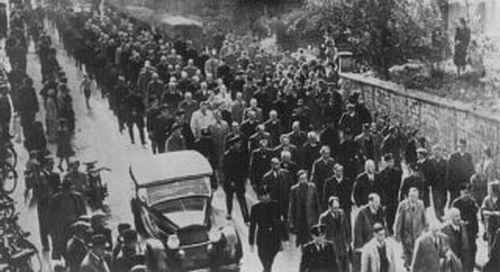
Jews arrested during Kritallnacht being marched through Baden-Baden escorted by the SS. Source: Bildarchiv Preussischer Kulturbesitz
While SA men were terrorizing and attacking Jews and their possessions, SS men in civilian garb saw to it that the pogrom didn't turn into massive plundering. So, the SA remained responsible for public violence while the SS opted for murder abroad or within the walls of camps and prisons. For many years, the German population would see the SS as the decent face of the Third Reich. After the night of the long knives, the SS would focus on murder on an continuously growing scale.
The SS: the most powerful organization of the Reich
After July 2, the SS was proclaimed an independent organization no longer subordinate to the SA. The SS men involved in the carnage were promoted and were presented with an honor dagger as reward for their loyalty. Meanwhile, the SS was clearly distinguishable from the SA as the brown uniform was replaced by a black uniform. Later on, SS men wore field gray, just like the German army.
When Reichspräsident von Hindenburg passed away on August 2, 1934, Hitler took his position of power. From then on, Hitler held the dual function of Reichspräsident and Reichskanzler. He was to be addressed as Führer and Reichskanzler. Now, almost nothing still stood in Hitler's way to develop his Dritte Reich. The SS was to play a prominent role in it. The Nazi party formed the nucleus of the Third Reich, the SS was the essence.
Creation of the SS was essential to the implementation of the plans of the Nazis. With the existing police and security apparatus, the government and the party were unable to execute their plans that for instance were focused on elimination of political and racial enemies. The Nazi party needed the SS as the organization which could take responsibility for certain issues for which the party would never dare take responsibility itself. The SS served the government but the organization operated somewhat independently as it was accountable for its own activities. The government should never be guilty of persecution, torture and murder directly, contrary to the SS. Hitler and his subordinates within the government issued the orders, the SS carried them out.
Heinrich Himmler converted the SS from a limited private army to a party police. He wanted to keep track of everything and everybody. Himmler described the mission of the SS in a pamphlet of 1936 as follows:
.'We shall continually fulfill our task: guaranteeing the internal security of Germany just like the Wehrmacht protects the security, the honor, the grandeur and the peace of the Reich against dangers from the outside world. We shall see to it that in Germany, the heart of Europe, the Jewish-Bolshevist revolution by inferior people can never erupt again, neither from within nor by envoys from outside. Without remorse, we shall be a pitiless sword of justice for all those forces whose existence and activities are known to us, on the day of the slightest attack whether it be today, within decades or within centuries.
All this didn't change over the following years, as becomes clear from the manual of the NSDAP of 1943 which describes the mission of the SS as follows:
'The original and most important task of the SS is to act as protector of the Führer. Ordered by the Führer, the number of tasks has been increased and now also includes the internal security of the Reich'.
The SS was more than a police and security service though. As the plans of the Nazis gradually became clearer, the SS was allocated new functions and responsibilities. It participated in all forms of suppression, persecution and extermination of internal enemies of the Nazi regime. The organization fulfilled its tasks not only within Germany's borders but also in all countries occupied by Germany. In the conquered countries it would see to the security and preservation of the area and it also played a role in the Germanization and deportation of conquered peoples.
The role of the SS within the state grew larger and larger. The organization was subjected to many changes and expansions. In the end, a complex structure came into being. Himmler stood at the top of the structure and 12 chiefs of staff of various main offices within the Reichsführung-SS were subordinate to him.
The complexity of the organization
At its pinnacle, the Reichsführung-SS consisted of 12 main offices. Each of those was made up of various branch offices and some main offices formed an umbrella organization over various state and party organizations. The Reichssicherheitshauptamt - main office of state security - or RSHA for instance consisted of seven branches of which one, the Gestapo had various subbranches. The Hauptamt Ordnungspolizei was responsible for over 10 police organizations and the number of organizations and branches within Himmler's personal staff was even higher still.
The SS encompassing so many organizations during the years of war can be explained by the mountain of tasks of the organization. Any organization engaged in really all aspects of homeland security, from fighting fires to dealing with criminals would have been a body of massive proportions for an area as large as the German Empire. The SS was an organization though that went far beyond guaranteeing internal security; it was represented in every nook and cranny of Nazi society. Apart from security, the SS dealt with for instance racial issues, scientific research, industrial development,, immigration and emigration, the waging of war and the creation of a Greater German Empire inhabited by Aryan Übermenschen To put it simply: next to the Nazi party, the SS was the most important creator of the Third Reich.
Whereas it was assumed directly after the war the organizational structure of the SS was very solid, daily functioning of the SS proved otherwise. Organizations and leaders competed against each other because they were responsible for identical tasks. A fine example of this is for instance the overlapping tasks of the Sicherheitsdienst and the Gestapo. Both were secret services which in particular should be engaged in gathering intelligence about enemies of Nazism. So, both the SD and the Gestapo were for instance engaged in tracking down Jews. In order to make some distinction, the Gestapo was authorized to make arrests and the SD was formally tasked with keeping an eye on people and tracking them down so in the end the Gestapo could arrest them. The distinction between tasks was so vague however that both organizations can be considered direct competitors. Problems like this regularly popped up within more branches of the SS but interests of the SS also collided regularly with the interests of the party or the Wehrmacht. Höhere SS- und Polizeiführer (high ranking officials responsible for the police and the SS in a certain area or a country) had to deal with a Reichskommissar, governor or Gauleiter for instance who also had identical responsibilities for security and the persecution of Jews in the same area and the intelligence branch of the Wehrmacht. Just like the SD for instance, the Abwehr kept a close eye on the morale of the population.
The vague distinction between tasks and responsibiities with the SS was equal to the entire organizational structure within the Third Reich. Within the higher ranks of the party, the vagueness was easy to observe. Various responsibilities of prominent Nazis collided with each other or showed overlap. This was possibly Hitler's strategy to maintain his position of power. By playing his people off against each other, Hitler prevented them from turning against him. Numerous prominent Nazis had mutual conflicts or strongly disliked each other. In their conquest for power, many Nazis, including Himmler, amassed all sorts of functions in order to be stronger than their competitors. During the years of war, Himmler won this struggle for power. Being in charge of both the SS and the German police, he was the most powerful man within the Third Reich after Hitler. Only at the end of the war would he fall from grace and according to many, his position of power was taken over by Martin Bormann.
It is far from the truth though that the diversity of organizations within the SS only had negative consequences. Cooperation between the various branches within the SS and the German police was at times very useful to achieve certain goals. In particular in the organization of the extermination of the Jewish people, the cooperation between the various branches proved extremely successful, with tragic consequences. A fine example of far reaching cooperation between individual branches within the SS and the German police are the so-called Einsatzgruppen.
Cooperation with SS-components within the Einsatzgruppen
These groups were deployed during the attack on Poland in 1939 as well as during the invasion of the Soviet Union in 1941; specially formed units within the SS tasked with eliminating and executing enemies of the Reich behind the front. During the invasion of Poland, these groups mainly focused on Polish intelligentsia but in the Soviet Union, various political and racial enemies were murdered including officials of the Communist party, political commissioners of the Red Army, Jews, Gypsies and partisans. The actions of the Einsatzgruppen heralded the beginning of the total extermination of Jews, Gypsies and other minorities in the extermination camps.
The groups were subordinate to the RSHA, which was headed by Reinhard Heydrich from 1939 to 1942. People were recruited from various branches within the SS to be deployed in one of the Einsatzgruppen. In October 1941, Einsatzgruppe A for instance consisted of the following people:
- Auxiliary police: 87
- Female personnel: 13
- Gestapo: 89
- Interpreters: 51
- Kriminalpolizei: 41
- Motorbike riders: 172
- Ordnungspolizei: 133
- Radio operators: 8
- Sicherheitsdienst: 35
- Telexoperators: 3
- Waffen-SS: 340
Various SS and police organizations operated not only within the Einsatzgruppen with a positive result for the Nazis. The Endlösung could never have been carried out by the SS alone. Various parts of the German police were also closely involved in arresting, guarding and deporting the Jews and their cooperation was indispensable for achieving he plans of the Endlösung.
The major elements of the SS
It is impossible to deal extensively with all elements of the SS in one article. A first distinction is of course the difference between the actual SS and the German police. As from June 17, 1936, Himmler was Reichsführer-SS and Chef der Deutschen Polizei. With this, a new cooperation was created between the SS and the police and leadership of the various branches of the police fell to the SS. The main difference between the SS and the German police was that, formally, the SS was an organization ruled by the party and the police was ruled by the state. In the Third Reich, the borderline between party and state was very thin though and in fact, it can be said that after Hitler's seizure of power, party and state were melted into one. This makes it difficult to make a clear distinction between the organizations of the SS and the police. Moreover, the SS and the German police were so closely interconnected that the difference between these two was hardly noticeable.
The RSHA for instance included the Gestapo and the Kriminalpolizei, or Kripo both parts of the police apparatus but the Sicherheitsdienst, or SD, clearly a part of the SS was included in this main office. This overlap is also clearly visible in the function of Höhere SS- und Polizeiführer, or HSSPF, which person supervised the Ordnungspolizei or OP, a police organization but also the Kommandoamt der Waffen-SS which was part of the SS. To put it a little more clearly, one can say the SS played a leading role over the German police. Officials of for instance the OP, the Schutzpolizei and the KRIPO didn't belong to the SS in principle, their managers did. Heinrich 'Gestapo' Müller, chief of the Gestapo and Kurt Daluege, chief of the OP are two examples of SS officials who were in charge of a police organization.
When making a subdivision specifically within the SS, thereby omitting the apparatus of the police, it would be this:
- Allgemeine SS
- Waffen-SS, (before 1939: SS-Verfügungstruppe)
The Allgemeine SS was the civilian branch of the SS and the Waffen-SS the military. This classification can only be made from 1939 onwards because the term Waffen-SS wasn't in use before that date. The military units of the SS were known at the time as SS-Verfügungstruppe (SS-VT). A particular element within the SS not included in this qualification for a long time were the so-called Totenkopfverbände - death head squads. These armed units manned the concentration camps and formed a separate organization within the SS until war broke out. During the war however, these units were incorporated in the Waffen-SS and within the latter, a division was even established made up of men of these Verbände. Later on, these would be subordinate to the SS-Wirtschafts- und Verwaltungshauptamt -main office of economic management- or SS-WVHA.
Apart from the Verbände mentioned earlier, the Sicherheitsdienst or SD also was an organization within the SS with a special status. Men for the SD were recruited from the Waffen-SS and, apart from their rank in the SD, they held a rank in the Allgemeine-SS but the organization was of such proportions that the SD will also be described separately in this article. The leader of the SD and the RSHA, Reinhard Heydrich also held a special position within the SS. During his career he can be considered the second man in the organization after Heinrich Himmler. He enjoyed much power as leader of the SD and the Sicherheitspolizei or SIPO and his role as organizer of the Endlösung should not be underestimated.
The Allgemeine-SS, Waffen-SS, Totenkopfverbände and the Sicherheitsdienst will be dealt with in separate articles. In these, no attempt is made to paint a complete picture of the history of these elements but to shed some light on the structure of the organization and to explain the consistency between these branches within the SS.
A state within a state
From the years before the war onwards, the SS had so many interests and responsibilities within the Nazi government at home and abroad that the organization can be considered a state within a state. The SS for instance had its own army, an economic branch, an intelligence branch, its own prisons and concentration camps and several economic enterprises. In addition, representatives of the SS were involved in for instance the government, education, science and social life within the Third Reich. The pinnacle of the SS as a state within a state was the intended colonization of areas in the East where, according to Himmler's far-reaching plans, special SS societies were to be created.
In the period prior to Hitler's taking power, the SS couldn't be seen yet as a state within a state. Supervised by Himmler, the highest leader of the SS, the organization was ruled by a threesome with a strict separation of the work of these three men. Karl Wolff, Himmler's personal adjutant bore great responsibility for the day to day business within the SS. Reinhard Heydrich was in charge of the secret services and Theodor Eicke was responsible for the concentration camps. Based on his function, Heydrich was authorized to arrest and eventually release people whereas Eicke saw to the stay of the prisoners in the concentration camps.
Below are the images of the four most important and powerful leaders of the SS in the first years after Hitler's seizure of power, The functions they held at the time are shown as well as the period they served in. Later on, these functions changed or were expanded.
After the seizure of power, gradually more and more tasks were allotted to the SS and there was no longer a question of a triumvirate headed by Heinrich Himmler. In the end, 12 main offices came into being within the SS, the so-called Reichsführung-SS and each office had its own leader. Apart from that, there were other high ranking positions within the SS such as the Höhere SS und Polizeiführer or HSSPF and the high-ranking generals within the Waffen-SS. In addition, more high-ranking persons were active within various main offices. In the RSHA for instance, people like Heinrich Müller. chief of the Gestapo and Adolf Eichmann, chief of the Jewish section of the Gestapo, Referat IVB held influential functions.
The SS as a state within a state evolved during the years after the seizure of power. During the years before the war and the first years of the war, the SS stood at the pinnacle of its power. Each branch, each element, each member was an integral part of the organization and played its own role in the fulfillment of the mountain of tasks of the SS. As it is impossible to describe all tasks of the SS at the highest point of its power, a number of examples will be described which provide an image of the way the SS can be considered a state within a state.
The influence of the SS on education
After Hitler's seizure of power, the educational system was soon 'Nazified' just like every element of German society Moreover, during Hitler's tenure, a number of new institutions was introduced aimed at training pupils to become the future political and military leaders of the Nazi state. To this end, three sorts of schools were established: the Adolf Hitler Schule or AHS, the Nationalpolitische Erziehungsanstalten or Napolas and the Ordensburgen
The AHS was controlled by the HitlerJugend or HJ and the other two were managed by the NSDAP. The SS exerted much influence on the Napolas and to a lesser extent on the Ordensburgen.
Napolas were political educational institutes aimed at restoring the level of the old Prussian military academies. Three of these institutes were established in 1933 with August Heißmeyer in charge. In 1938, 23 of them would have been established including four in Austria and one in the Sudetenland. Students were recruited from the HJ and the admission requirements were very high. Graduation percentage was very low as well. Napolas stood under direct supervision of the Dienststelle SS-Obergruppenführer Heißmeyer, one of the twelve main offices of the SS. Apart from the Nazi ideology, the SS ideology of courage, honor and loyalty were closely woven into the curriculum of the Napolas. Headmasters of these schools came from the SS just like the major part of the teachers. Due to the strong influence of the SS the opportunity was there to recruit officers for the Waffen-SS in particular. During World War Two, many graduates served in one of the military branches of the Third Reich.
The Ordensburgen were even more elitist than the Napolas. Only the most fanatical young Nazis were trained here to become the future leaders of the Nazi party, the SS and the German military branches. The Ordensburgen were castles and named after the Medieval castles built by the knights of the Teutonic Order. In those castles, of which Vogelensang and Sonthofen were the best known, an esoteric atmosphere prevailed and students were subjected to tough military training. Because of the harshness of the curriculum, the number of graduates was very low. During the years of war, many graduates also served in one of the branches of the German armed forces.
The influence of the SS on the economy
At the end of 1942 and to Hitler's great satisfaction, Heinrich Himmler could report that in his extermination camps two million Jews had already been liquidated and that this number would increase soon. The physical elimination of European Jewry was one of the most important tasks of his organization and this gruesome task was executed by the SS as efficiently as possible. The camps had been set up comparable to an industrial assembly line with various facilities like subterranean dressing rooms, gas chambers, electric elevators and crematorium ovens, all efficiently tuned to each other in order to gas hundreds of Jews daily.
Although gassing of people didn't yield any income, the SS made money from the extermination process in all sorts of ways. On arrival in the camps, all possessions of the prisoners, including valuables such as watches, jewelry and fur coats were confiscated. Moreover, prisoners frequently brought their savings along which were immediately taken away as well. In particular certain foreign currency was of great value for the German economy. In addition, before gassing the hair of the prisoners was cut and subsequently sold to the textile industry. But not only prior to gassing money was made of the victims in a lucrative manner; the SS could also make money after gassing. Gold teeth were extracted from the dead, melted down and subsequently transferred to the Reichsbank.
The extermination camps certainly were not the only important source of income for the SS and the state as within the camps, huge sums of money were made. At the end of 1942, Himmler was in charge of 20 official concentration camps and 165 labor camps linked to them, most of them located within the borders of the Reich. Moreover, thousands of smaller camps were established by local chiefs of the SS and police. The nature of these camps had changed considerably since the establishment of the first camps in 1933. In the first camps in which (political) prisoners were kept in protective custody, inmates were deployed in traditional prison labor such as work in a stone quarry. In the course of the war, the camps turned into economic institutes providing forced laborers for numerous enterprises which were short of manpower because of the war. The SS 'delivered' forced laborers to for instance Germany's largest chemical concern, IG Farben.
From 1942 onwards, the concentration camps were subordinate to the SS-WVHA, the main office of economics and administration. SS-Obergruppenführer Oswald Pohl was in charge of this department until the end of the war. Being in charge of the camps, he considered the inmates as company resource. When he noticed at the end of 1942 that out of the 136,870 prisoners who had arrived in the camps, 70,610 had already died, he spoke of 'a reduction of the number of persons available to the production of arms in the concentration camps.' In his view, the life of the inmates was of particular value for the operation of the German industry and a high mortality rate was disadvantageous to the German war effort. Within the SS-WVHA, the following calculation was made about the advantage of deploying forced laborers:
'Hiring inmates of concentration camps by industrial enterprises yields an average profit of 6 to 8 RM per day of which .70 should be subtracted for food and clothing. Assuming the life expectancy of an inmate to be nine months, this amount should be multiplied by 270, resulting in a total of 1431 RM. This profit can be increased by making rational use of the corpses, meaning gold fillings, hair, clothing, valuables etc. On the other hand, each corpse causes a loss of 2 RM, the cost of the cremation.'
As in the course of the war, some 11 million men had been withdrawn from the industry by the army, power over the forced laborers contributed considerably to Himmler's position of power and to the SS and consequently, he rose in Adolf Hitler's esteem. Himmler was therefore granted permission to start his own armament factories. One of Himmler's strongest rivals within the Nazi party, Reichsmarschall Hermann Göring took advantage of Himmler's forced laborers. Within his large economic enterprise, the Reichswehr Hermann Göring, 80 to 90% of the work force came from the camp whereas in the rest of German industry, this percentage stood at about 20.
But not just Göring owned his own economic company; Himmler's SS owned a number of companies as well. Some of those were:
- Deutsche Erda- und Steineke
- Mining and earthworks
- Deutsche Versuchsanstalt für Ernährung und Verplegung
- Production of herbs and spices
- Deutsche Ausrüstungswerke
- Various factories and a number of branches including bakeries, a cutlery plant, a wood mill and an iron foundry
- Gesellschaft für Textil- und Lederverwertung
- Production of uniforms for the Waffen-SS by women in concentration camp Ravensbrück
All of these companies were managed by Amtsgruppe W, Wirtschaftliche Unternehmungen- economic enterprises - of the SS-WVHA. Oswald Pohl was also in charge of this Amtsgruppe. He took care that the administration of these companies remained strictly separated from that of the camps. Pohl's role within the SS should not be underestimated. Because of his power over one of the most important and powerful main offices of the SS, he might well have been the most influential man within the SS after Himmler and Heydrich. His office brought in huge amounts of money to the benefit of the SS and the state. Owing to his efforts, the SS evolved into an influential organization in the economic sphere as well.
The influence of the SS on science
In addition to its role in education, the SS did have certain interests within the scientific world. A few (semi) scientific organizations were represented in Himmler's personal staff. The Gesellschaft Ahnenerbe for instance conducted semi-scientific research into the origin of the Germanic race and Heinrich Himmler also had a statistic and a scientific institute at his disposal in his staff as well. Numerous people with a scientific background served in various branches within the SS but the medical experiments conducted in the camps in particular have left their mark on the sort of science practiced by the SS.
After the seizure of power by the Nazis, things occurred in Germany that indicated that the medical world as well was adapting itself to the general criminal policy of the Nazis; even before medical experiments were conducted in the camps. July 14, 1933 saw the introduction of the Reichssterilisationsgesetz or sterilization law which enabled physicians to sterilize people suffering from mental or physical hereditary diseases. Common physicians in hospitals also euthanized handicapped babies and young children and subsequently they were involved in the T4 euthanasia program. This program was carried out on orders by the department of the Führer and was also carried out by common physicians. Mental patients from German and the occupied areas were considered unnecessary expense and a burden to society and had to be eliminated on orders by the state. The victims of T4 were transported by busses of the SS to the location where they would be killed. SS men in white coats over their uniforms escorted their victims to the gas chambers where they were murdered with carbon monoxide. Gas van were also deployed, trucks of which the exhaust was connected to the cargo space, killing the victims by asphyxiation. Of course, these practices were just finger exercises for the mass murder which was carried out later in the extermination camps.
Experiments in the concentration camps were mainly conducted in the period 1942-1945. During that period some 200 physicians, of whom many held a position in the SS, conducted an estimated 70 medical research programs. Within the camps the doctors were also responsible for selecting prisoners fit for forced labor while prisoners unfit for labor were sent directly to the gas chambers. The experiments in the camps can be classified as follows:
1 Experiments aimed at improving the chances of survival of German military
These experiments were carried out in Dachau by the Luftwaffe and the aviation research center in cooperation with the SS. The tests to which prisoners were being subjected mostly entailed testing of human endurance at high altitudes and low temperatures. By placing inmates in a low pressure cabin it could be determined at which altitude the pressure was safe enough for air crews to bail out. During experiments with low temperature, guinea pigs were undercooled and ways were sought to treat hypothermia. Tests were also conducted to determine the length of survival when only sea water was drunk.
2 Experiments aimed at developing and testing drugs and methods of treatment of the sick and injured
In Sachsenhausen, Dachau, Natzweiler, Buchenwald and Neuengamme scientists tested sera and anti-biotics to combat contagious diseases such as malaria, typhoid, tuberculosis, yellow fever and hepatitis. Camp Ravensbrück was the location for experiments aimed at checking out the efficiency of a sulpha drug, called sulphonamide for the treatment of infected and bloated wounds and bone transplants. In Natzweiler and Sachsenhausen, guinea pigs were subjected to tests with phosgene and mustard gas to determine in which way victims of gas attacks could be treated. The experiments in the field of chemical warfare were funded by the German army.
3 Experiments aimed at proving the racial and ideological ideas of the Nazis
With these experiments based on biological research it had to be determined why certain people were inferior to the superior Aryans. In the camps, research was conducted on midgets and twins and corpses of Jews were examined. For instance the gruesome and senseless experiments by SS-Hauptsturmführer Dr Joseph Mengele in Auschwitz are included in this category. The research of SS-Hauptsturmführer Prof Dr August Hirt into the way various races reacted to contagious diseases was aimed at proving Jewish racial inferiority and hence was included in this category as well.
Conducting these three kinds of experiments was unethical and gruesome but the results of certain experiments in category 1 and 2 have been important to science in some way which does not mean they can be justified in any way though. The experiments in category 3 have been absolutely senseless and are a horrible example of the utterly unscientific approach to racial ideology of the Nazis. Injecting brown eyes with a blue fluid is only one gruesome example of an experiment that had nothing to do with science at all but with the spirit of the person Joseph Mengele who conducted this experiment. As there were no boundaries within the SS as to the treatment of prisoners, physicians in the secluded world of a concentration camp could go their own way without being hindered by the medical oath of honor they had once sworn.
After the war, the medical experiments in the camps were dealt with in Nuremberg during the Medical Case or Doctor's Trial. Only 23 physicians and medical functionaries, of whom many had served in the SS were tried. They were charged with planning and executing experiments on people against their will and in an horrible manner. As many guinea pigs died a terrible death, the 23 defendants were also indicted for murder. Seven of them were acquitted, four were sentenced to ten to twenty years in prison, five were sentenced to life and seven to death. Many medics who had been responsible for gruesome experiments in the camps including Joseph Mengele, escaped trial and were never tried. Others committed suicide before being arrested.
The envisaged colonization by the SS in the East
The most extreme examples of why the SS can be considered a state within the state are Heinrich Himmler's plans to establish colonies in large areas in the east where SS members and their families could live in a society that completely matched the norms and values of the SS and Nazism. The first large area in the east suitable for Himmler's plans was Poland, captured in September 1939. On May 25, 1940, Himmler submitted a memorandum to Hitler, entitled: 'Einige Gedanken über die Behandlung der Fremdvölkischen im Osten', -some thoughts about the treatment of foreign people in the east. This neutral and business like title hid a demonic plan. According to Himmler's plans, the various races that made up the Polish population - Poles, Jews, Ukranians, White-Russians and various minorities - were to be dispersed in order to destroy national conscience.
Poland had been divided by the Nazis into various districts. The Gaue of the NSDAP in western Poland: Danzig-Westpreußen and Wartheland - until 1939 known as Warthegau - had been annexed by Germany and belonged to Greater-Germany as from September 1939. The central part of Poland would be known as the Generalgouvernement during the Nazi occupation. It was intended that certain inhabitants of Poland, considered racially pure according to the Nazi ideology, were to emigrate to the annexed areas of Poland to assimilate. Tens of thousands racially pure Polish children were taken away from their families during the years of occupation and taken in by Aryan foster parents in Germany. Other, non-Aryan inhabitants in former Poland, were to be deported to the Generalgouvernement where they could perform forced labor for the Nazis under poor conditions and where they would gradually die out. The Polish Jews had to be removed from the former country altogether by means of massive emigration to Africa or some other colony. These plans concerning the Jews would soon turn into mass physical extermination though.
It was Himmler's intention that within 10 years only a small number of 'inferior people' would remain behind in the Generalgouvernement Its inhabitants were considered no more than a pool of forced laborers who were stripped of many rights. Education for instance was drastically limited and people had no right of autonomy.
Power over the Generalgouvernement wasn't in Himmler's hands though but in the hands of Generalgouverneur Dr Hans Frank, representative of the Nazi party. The annexed parts of former Poland were also ruled by party officials. Arthur Greiser and Albert Forster were the Gauleiter of Wartheland and Danzig-Westpreußen respectively. Hence, Himmler was certainly not the sole ruler in the east and he was frequently counteracted by his opponents who didn't represent the SS in the east but the Nazi party.
It wasn't Arthur Greiser though who counteracted Himmler. In his
In his Generalgouvernement Hans Frank enforced a real reign of terror and because of his position he was considered the uncrowned king of the area allotted to him. Just like Himmler, Frank was power hungry and he did everything he could to maintain and expand his position of power. In their struggle for power and Hitler's esteem, the two Nazi bigwigs were fierce competitors and that was mainly evident in the way they thwarted each other's plans. Frank was annoyed for instance by the fact that his Generalgouvernement had been designated a 'racial garbage bin'. Whereas he couldn't stop the deportations, he could counteract them in a certain sense. Because of his position of power he did form an obstacle that could prevent Himmler from achieving total control in the east.
Himmler's plans in former Poland were thwarted by opponents within the Nazi party. The plans for immigration partly failed and so Himmler had to look for other solutions to rid Poland of its Jews. He was offered a second chance to expand his power in the East and organize the country according to his racial and ideologic ideas with the launching of Operation Barbarossa, the German invasion of the Soviet Union. Himmler's important role in this military operation was described in an instruction from Hitler as follows:
'Regarding the necessity to settle once and for all the conflict between two opposing pollical systems, the Führer has charged the Reichsführer-SS with special tasks in preparation of the new political regime. Within the framework of these tasks, the Reichsführer-SS shall act independently and on his own initiative'.
The first special task the SS was charged with was the deployment of the Einsatzgruppen which were to eradicate all sorts of hostile elements in the Soviet Union. For the first time Jewish males, females and children were being executed on a large scale. Himmler's ultimate intention was to kill the unimaginable number of 30 million inhabitants of the Soviet Union including Jews, to create space for the expansion of the Third Reich. In this immense area he could also realize his own ambitions for power but here as well, he was being counteracted by opponents. In 1941, Nazi ideologist Alfred Rosenberg had been appointed Reichsminister für die besetzten Ostgebiete or minister of the occupied areas in the East and this meant Himmler did not have total control in the Soviet Union as well. In addition, the war in the Soviet Union dragged on and the Wehrmacht also held important positions in the occupied area. Neither officials of the Nazi party nor the Wehrmacht were answerable to Himmler and so he could do little to constrain their power in the East. Also partly due to the enormous setbacks suffered by the German army was Himmler unable to establish his SS state in the Soviet Union.
By its extensive network of various organizations with multiple tasks and its close involvement in numerous elements of society, the SS may well be considered a state within a state but it never had total control over its own extensive territory. Himmler's ambitions went far beyond the envisaged role the organization would have had to play within the Nazi state. Playing his associates off against each other was Hitler's most important strategy to prevent persons and organizations from achieving more power than he had himself. With this he prevented Himmler from becoming a serious competitor for power like Ernst Röhm who had succeeded. The SS served the state and the Führer but could never grow into an independent block of power.
The end of the Third Reich and the SS
In the autumn of 1944 and early winter 1945, it gradually became clear that the end of the Third Reich was imminent. At the Eastern Front, Red Army troops advanced relentlessly and they would soon discover the extermination camps in Poland. Although the Allies had been aware of the mass extermination of the Jews for a long time, the Germans made frantic efforts to erase all traces of the mass murder. In November 1944 for instance, Himmler ordered all facilities for mass murder in Auschwitz to be dismantled and in January he ordered all inmates in Auschwitz and neighboring camps to be evacuated to camps in Germany. Large numbers of prisoners were sent to Germany on foot forcibly in appalling conditions and escorted by camp guards. During these so-called death marches, large numbers of inmates died from exhaustion, hunger, diseases, torture and murder. January 27, 1945, Auschwitz was liberated by Soviet troops. In the camp they encountered 7,650 inmates still alive but there was no traces of their fellow prisoners or guards.
While in the East ever more camps were being evacuated and numerous prisoners died during the death marches, Himmler attempted to contact the Western Allies. By releasing large numbers of camp inmates, he tried to open peace negotiations. He talked for instance a few times with the authorized representative of the Swedish Red Cross, Count Folke Bernadotte about releasing Danish and Norwegian prisoners and he exchanged letters on the same subject in secret with the representative of the World Jewish Congress. Himmler's aim was to be accepted as mediator and Hitler's successor by the Western Allies through these negotiations. Himmler wasn't given the opportunity to see the Allied commander-in-chief Dwight Eisenhower though and when Hitler learned about the attempts at negotiations by his treue Heinrich he could definitely forget about his role as successor to the Führer. Hitler, at that moment staying in a bunker beneath the Reichskanzlei, saw the attempts at negotiation by one of his most loyal associates as high treason. He appointed not Himmler but Großadmiral Karl Dönitz his successor. On May 6, Himmler was stripped of all of his functions by Dönitz. One day after Himmler's downfall Alfred Jodl, representing Dönitz, officially signed the unconditional surrender of the German army ending the war in Europe. On May 23, the former leader of the SS committed suicide in a British PoW camp by biting a cyanide capsule.
Not only Himmler but numerous other high and low ranking SS men had fled. Many of them escaped to territories controlled by the Western Allies because they feared falling into Soviet hands. The Soviets were not known for their humane treatment of prisoners and SS members in particular who fell into their hands faced a hard time. The end of the war and the course of their lives were different for each individual SS member. Some of them surrendered, were arrested or committed suicide. A considerable number of high ranking SS men however could remain out of reach of the Allies and escaped to foreign countries with the help of the Catholic church and the Red Cross, among others. Many SS men are said to have been helped by Odessa (Organisation der ehemaligen SS-Angehörigen) or organization of former SS members, an organization established by the SS in order to unite them and support each other in their escape from Europe. Fierce speculation has gone on about the existence and the role of Odessa and up until today, historians have trouble distinguishing fact from fiction. Some SS men like Adolf Eichmann were arrested many years later but others, such as the notorious camp doctor Joseph Mengele were able to spend the remainder of their lives in freedom.
Prosecution of the SS and its members
During the trials in Nuremberg many SS members stood trial. During the first, the IMT against 22 high ranking Nazis and 6 Nazi organizations, Ernst Kaltenbrunner, the last head of the RSHA represented the SS.
He was found guilty of violation of the laws of war and crimes against humanity and sentenced to death. The SS, SD and Gestapo were labeled as criminal organizations. This first large tribunal was followed by trials, specifically targeted at a certain person or elements of Nazi policy. Various aspects of the SS were dealt with in these cases. For instance, 23 physicians including numerous SS men, stood trial during the Doctors Trial for their involvement in the gruesome medical experiments in the camps using inmates a guinea pigs. SS-Obergruppenführer Oswald Pohl and a few other employees of the SS-WVHA stood trial during the Pohl Trial and employees of the SS-Rassen-und-Siedlungshauptamt stood trial during the RuSHA case. A special court dealt with the Einsatzgruppen.
Sometimes, justice came many years later. SS-Obersturmbannführer Adolf Eichmann, one of the most important organizers of the Holocaust, was arrested as late as May 11, 1960 and he stood trial in Jerusalem from April 11 to December 15, 1961. He was sentenced to death. Two years later, from December 10, 1963 to August 10, 1965, 22 SS men who had worked in Auschwitz stood trial. Although the intensive hunt for SS men has ended, in the past years, trials have been held against individual members of the SS. For instance in 2004, the Dutch SS man Hubertus Bikker, known as the 'henchman of Ommen' was charged with murder of a resistance fighter. During World War Two, Bikker was a guard in Camp Erica near Ommen where he was known for his cruelty. Because of the poor health of the 89-year-old defendant he wasn't prosecuted and he was spared a prison sentence.
Because of its management of the concentration camps, its execution of the Endlösung and other forms of persecution and terror, the SS has left a clear mark on history. The SS is synonymous with the criminal nature of the Nazi regime and can be considered one of the most criminal organizations of the past century. The crimes of the SS were so severe that in the past 60 years, much trouble has been taken to prosecute its former members. Selection was far from objective as becomes clear from the fact that right after the war, many former SS men were employed by foreign security organizations. Their knowledge and capacities were to the advantage of for instance American intelligence services during the Cold War.
Although in the years after the war rumors popped up about SS men who had united in foreign countries, the SS and the Third Reich went down simultaneously. The heritage of the SS didn't just consist of the many personal tragedies of people who survived its terror and the memory of the many millions who didn't, it is a warning for the future as well. It appeared that common people in their function of official, police officer, prison guard, ruler or physician, serving in a terror organization like the SS, can evolve into murderers. From behind their desks, officials and rulers sent many hundreds of thousands to their death while large numbers of police officers, prison guards and doctors also had blood on their hands. Without an organization such as the SS, supported by the National Socialist state, these people could never have evolved into the murderers of the Third Reich.
Information
- Article by:
- Kevin Prenger
- Translated by:
- Arnold Palthe
- Published on:
- 16-05-2023
- Last edit on:
- 21-05-2023
- Feedback?
- Send it!
Related sights
Related books
Sources
- CAPELLE, H. VAN & BOVENKAMP, A.P. VAN DE, De Berghof, Verba, Hoevelaken, 2003.
- CAPELLE, H. VAN & BOVENKAMP, P. VAN DE, Hitlers handlangers, Verba, Soest, 2004.
- GELLATELY, R., Neurenberg-gesprekken, J.M Meulenhoff, Amsterdam, 2004.
- HUGHES, M. & MANN, C., De geschiedenis van het Derde Rijk, Zuidnederlandse Uitgeverij, Aartselaar (België).
- KERSHAW, I., Hitler - Hoogmoed 1889-1936, Het Spectrum, Utrecht, 2003.
- KERSHAW, I., Hitler - Vergelding 1936-1945, Het Spectrum, Utrecht, 2003.
- KNOPP, G., Hitlers moordenaars, Het Spectrum, Utrecht, 2004.
- POHL, D., Holocaust, Verbum, Laren, 2005.
- READ, A., Discipelen van de duivel, Balans, Amsterdam, 2004.
- SNYDER, L., Encyclopedia of the Third Reich, Wordsworth, Hertfordshire (UK), 1998.
- SPECTOR, S. & ROZETT, R., Encyclopedie van de Holocaust, Kok, Kampen, 2004.
- Microsoft Encarta Naslagbibliotheek (cd-rom), Winkler Prins, 2003.
- Nazi Conspiracy and Aggresion. Vol. II. USGPO, Washington, 1946, pag.173-237. (link)
- The Nazi's - A Warning From History (dvd), Hilversum, Just Entertainment, 2004
- Axis History
- Deutsches Historisches Museum
- Jewish Virtual Library
- Nizkor
- Shoa.de
- United States Holocaust Memorial Museum
- Simon Wiesenthal Center OnlineMultimedia Learning Center
- Wikipedia (German) - Schutzstaffel
- Wikipedia (German) - Organisationsstruktur der SS
- Wikipedia (English) - Schutzstaffel
